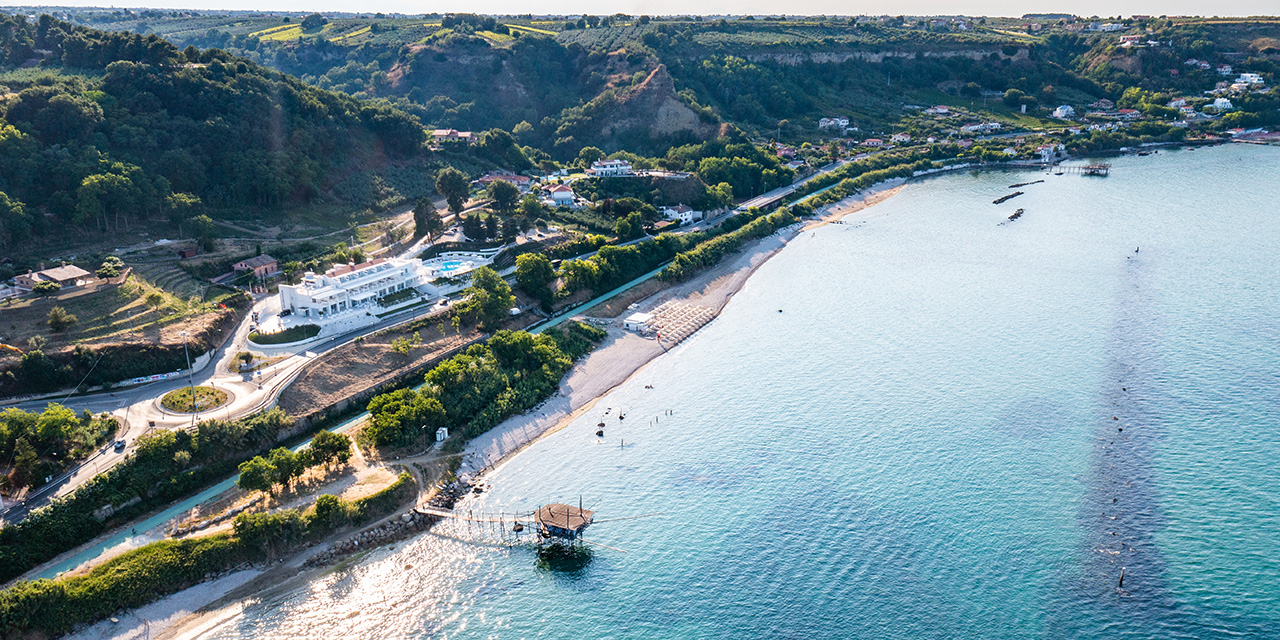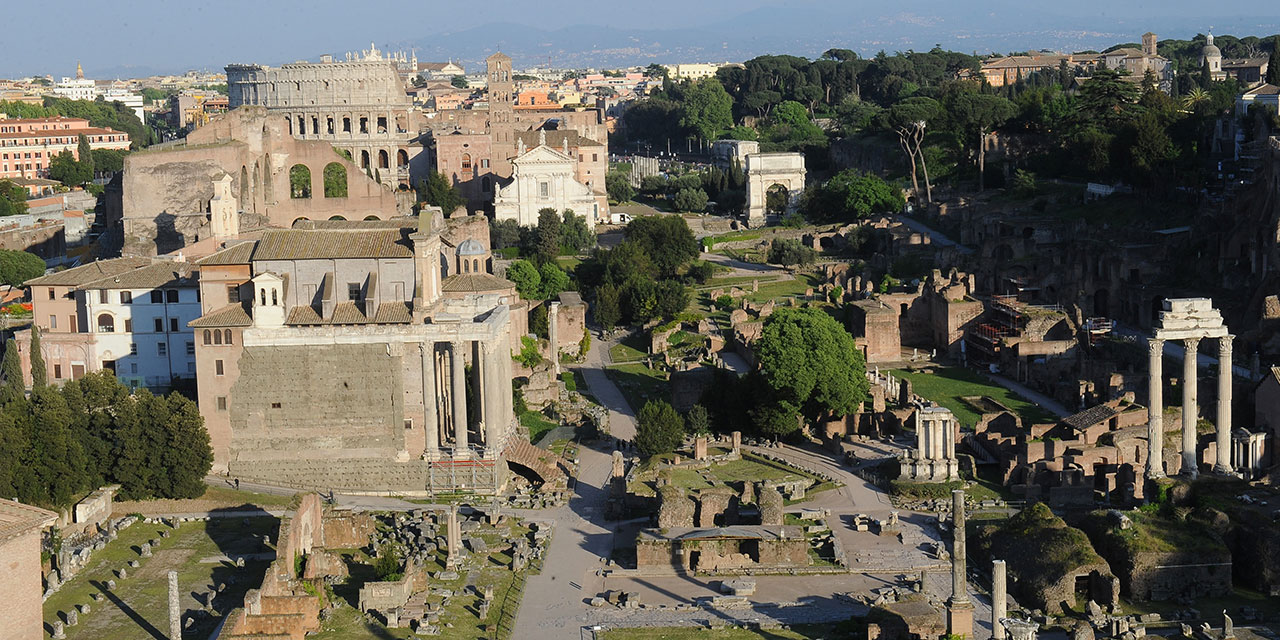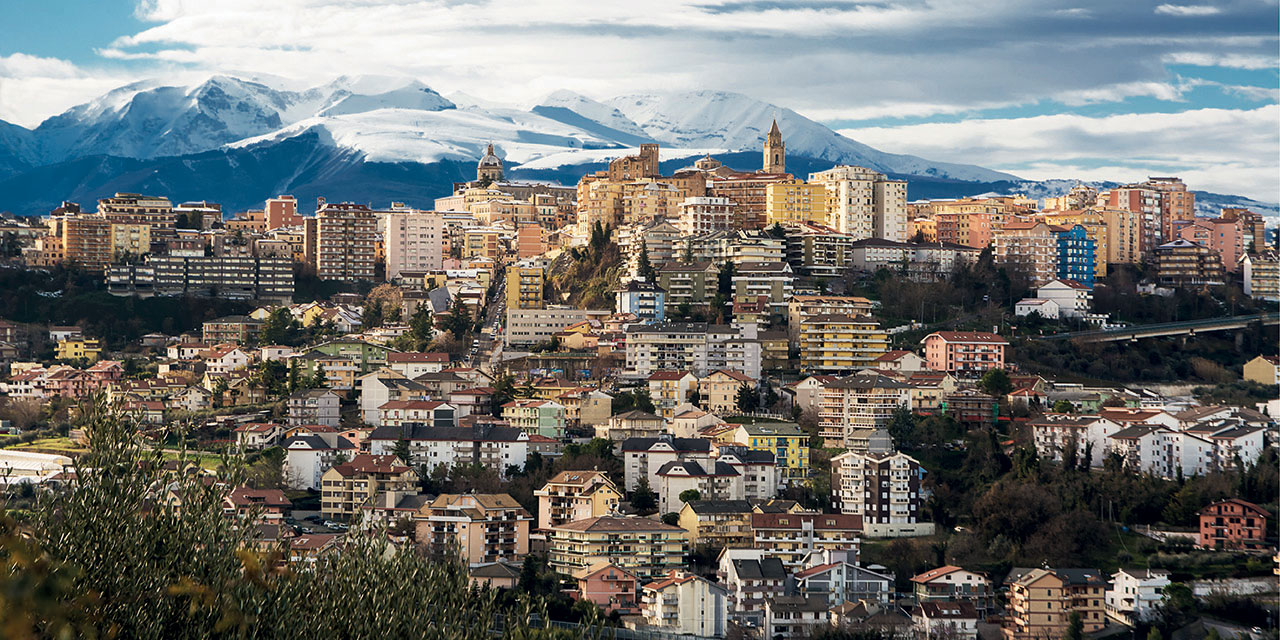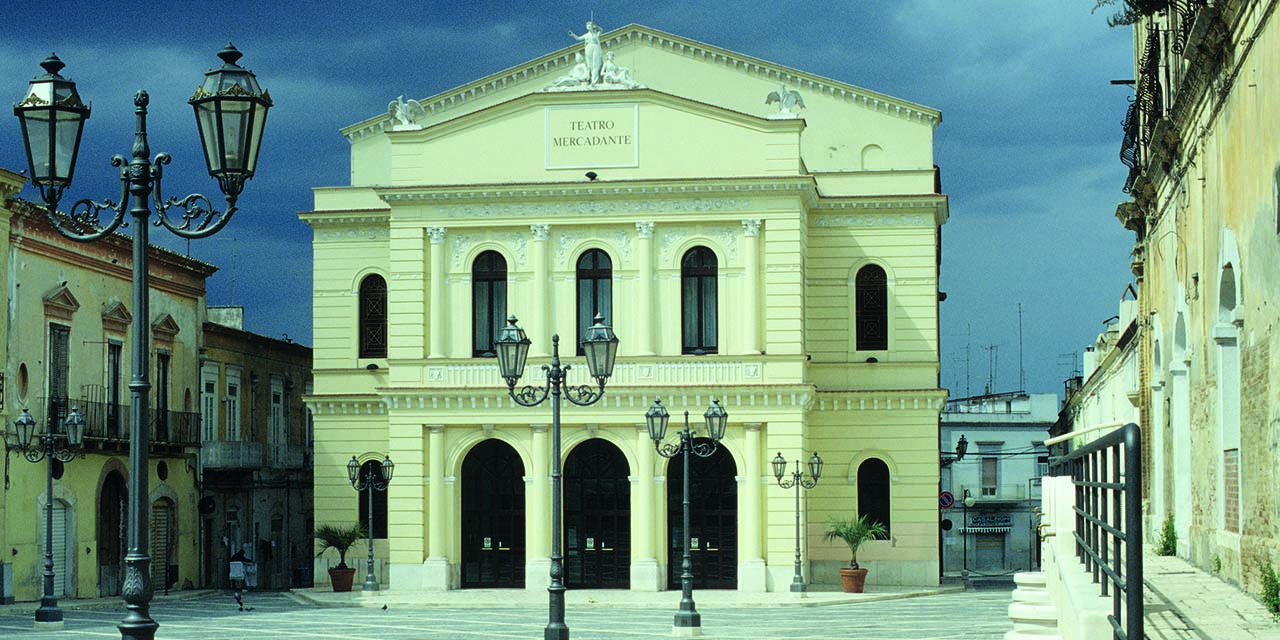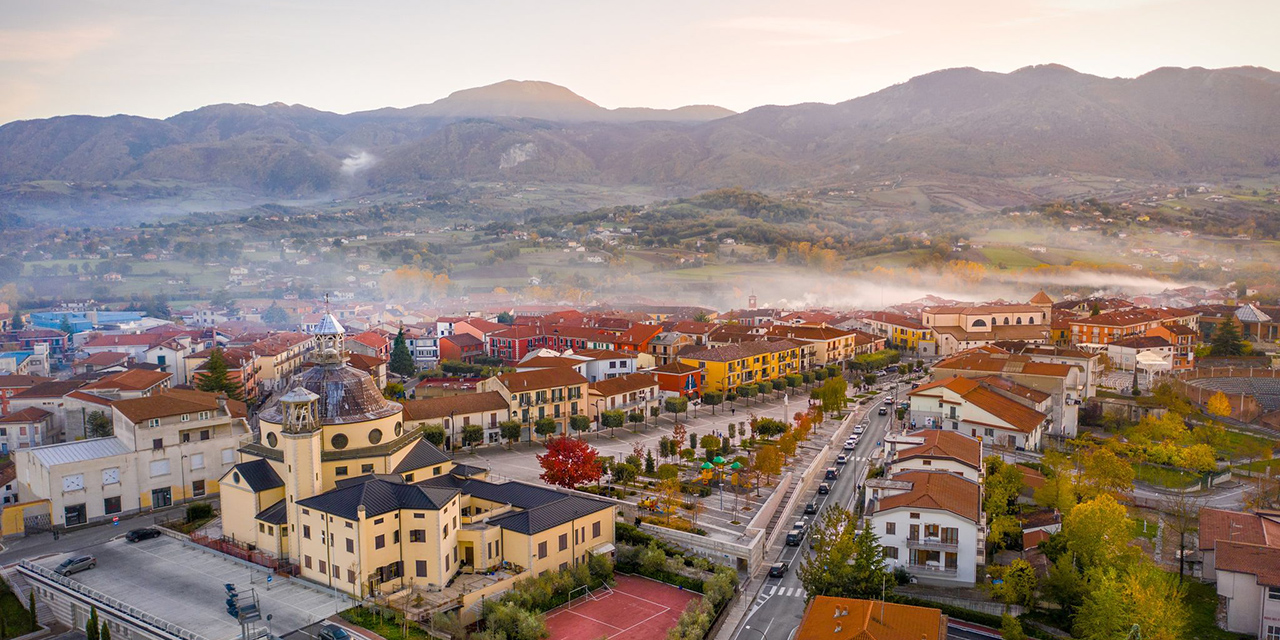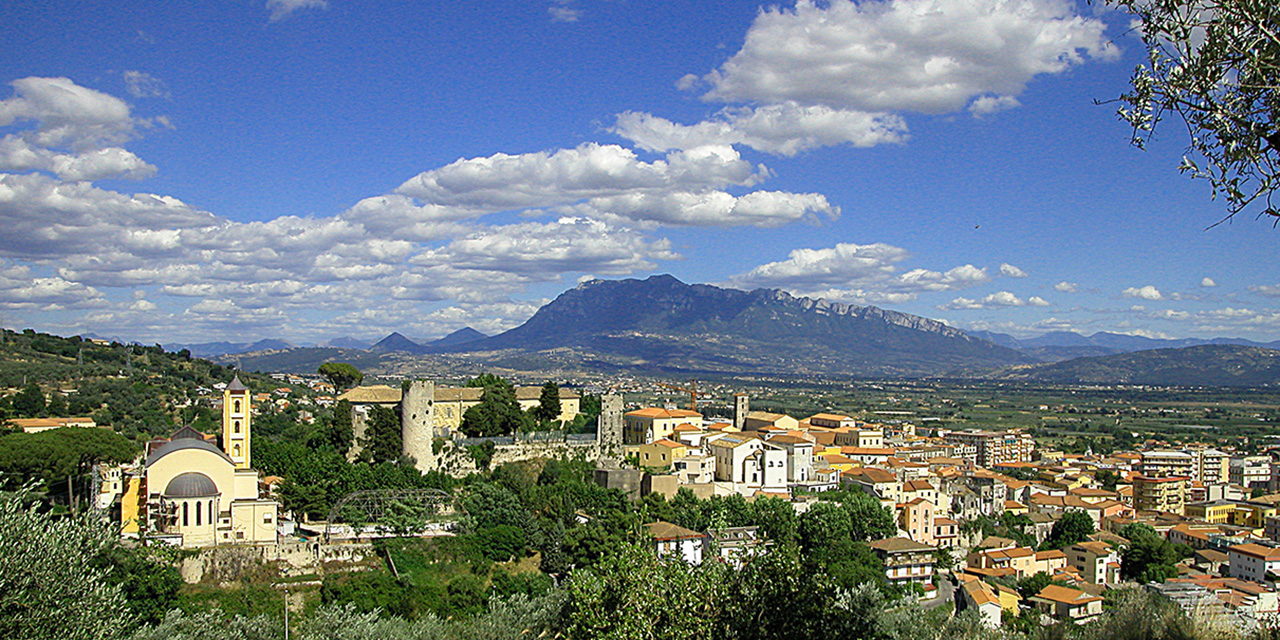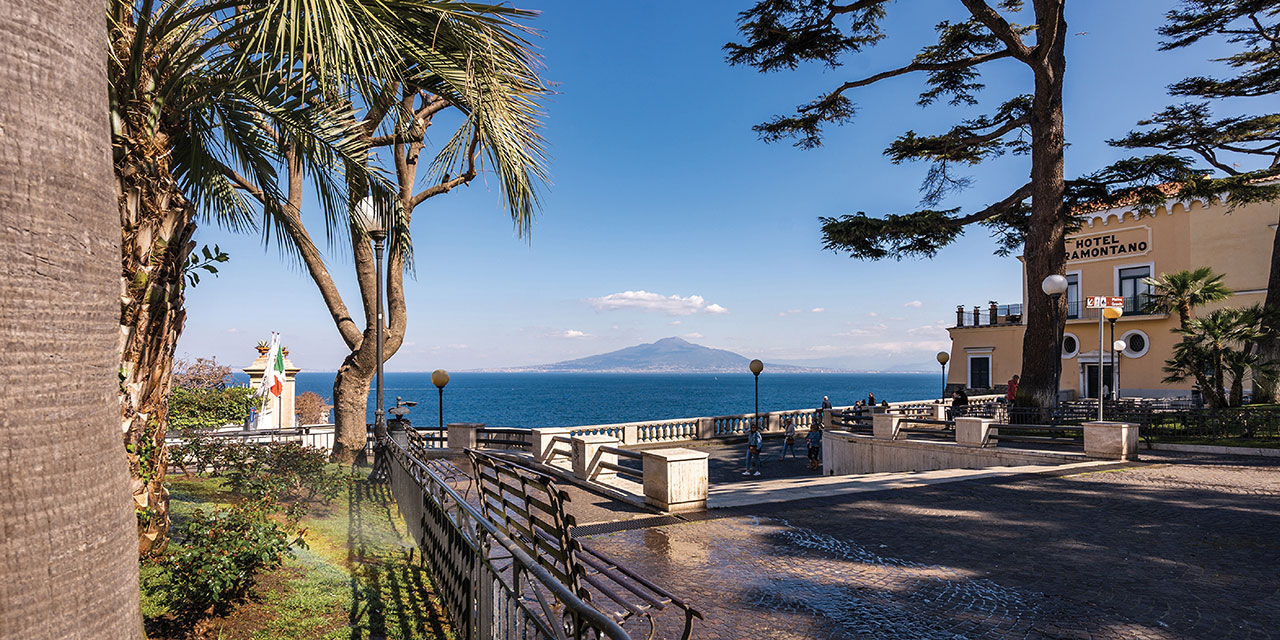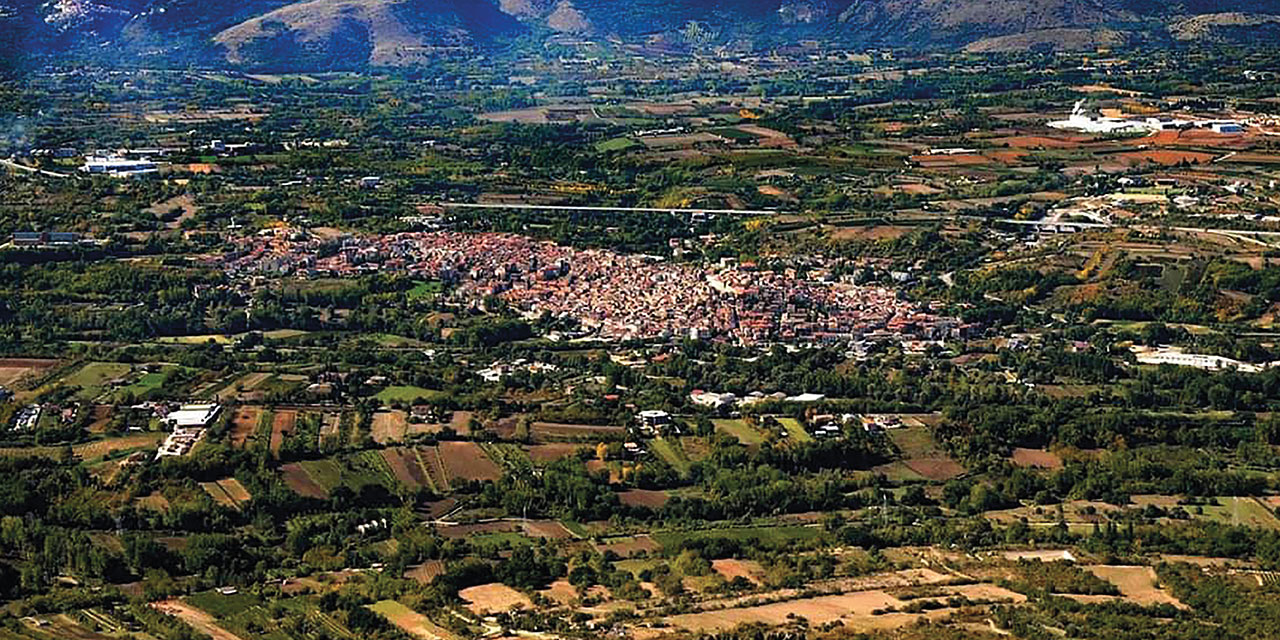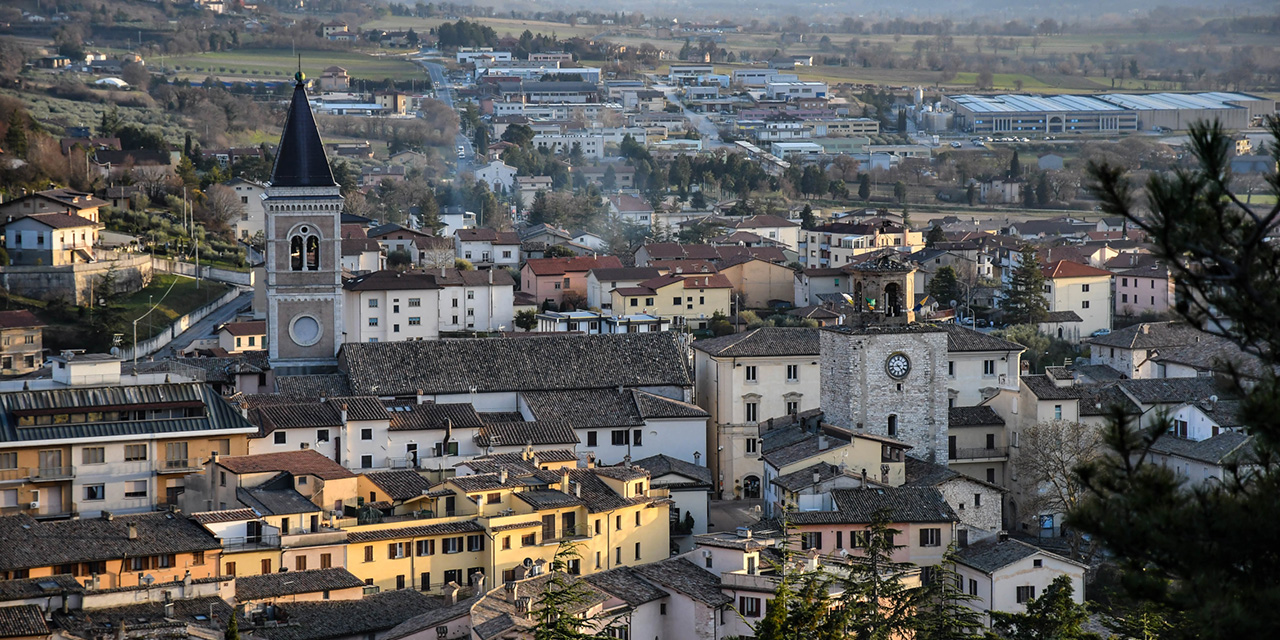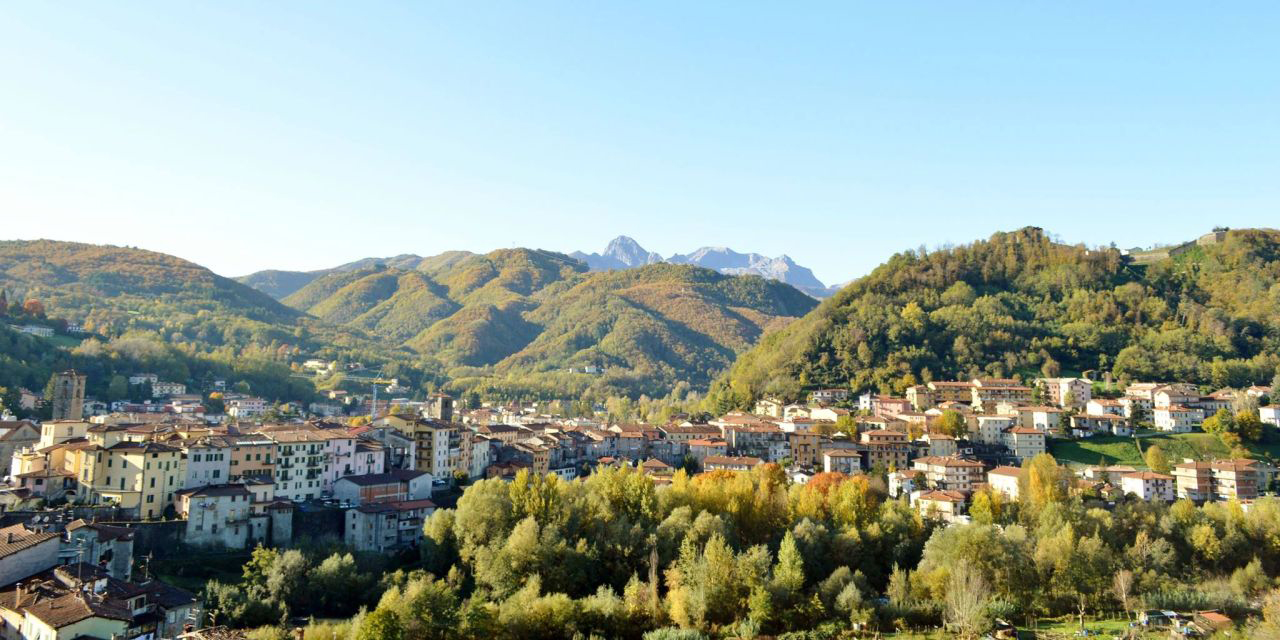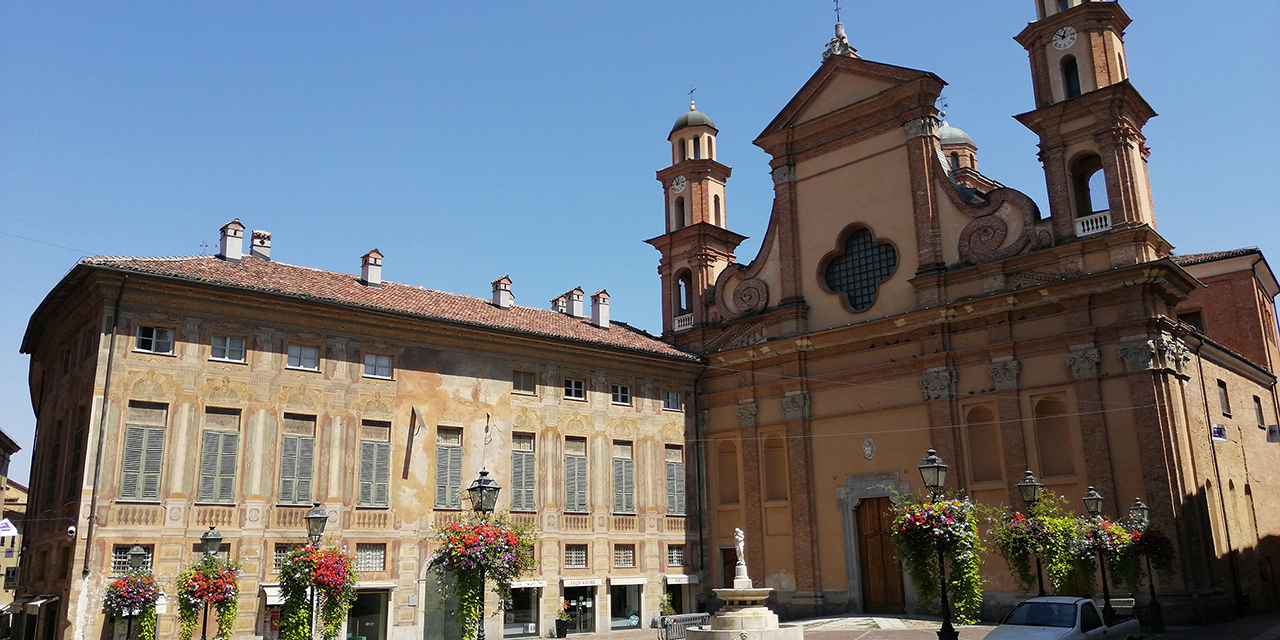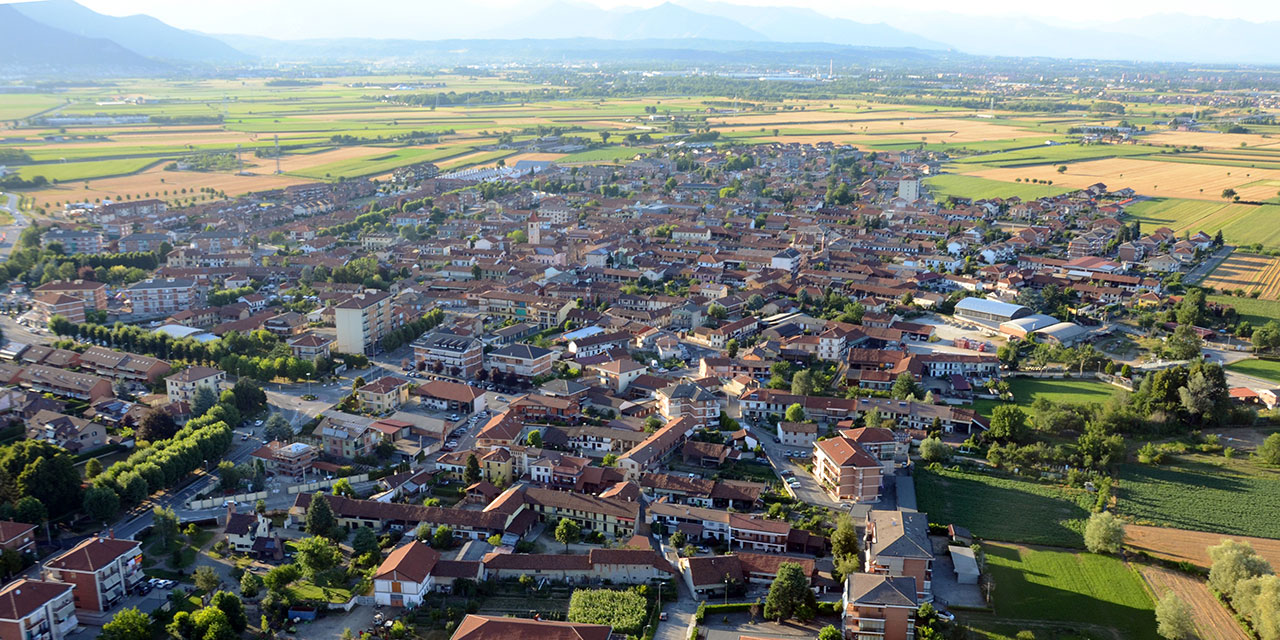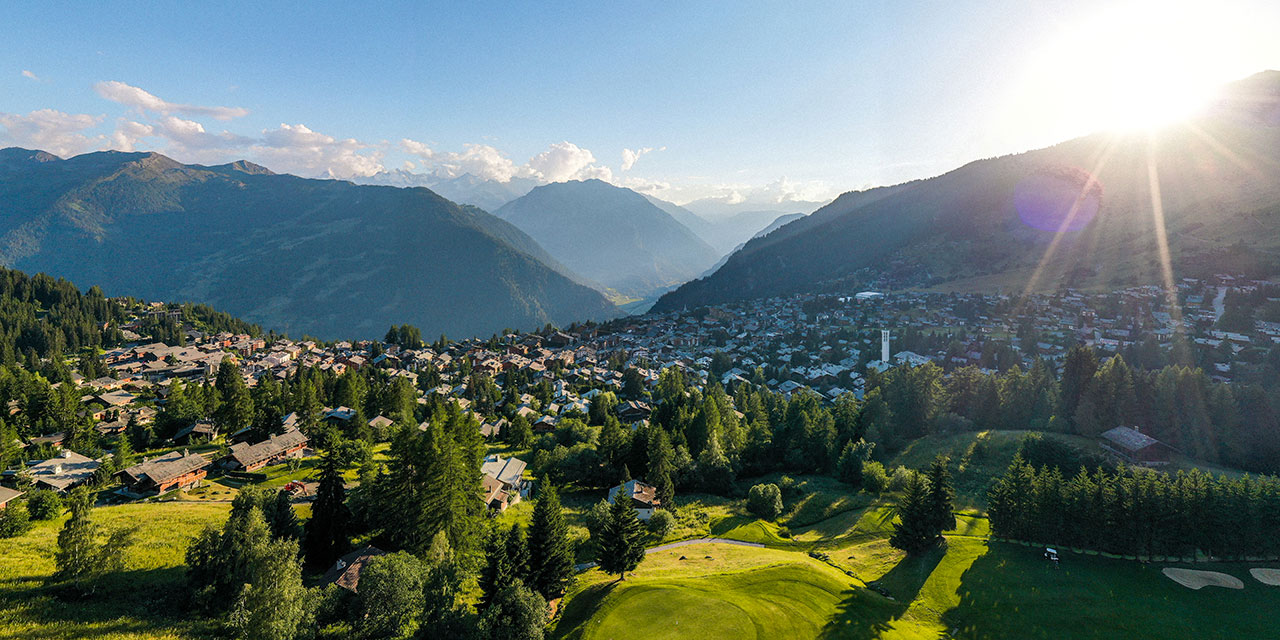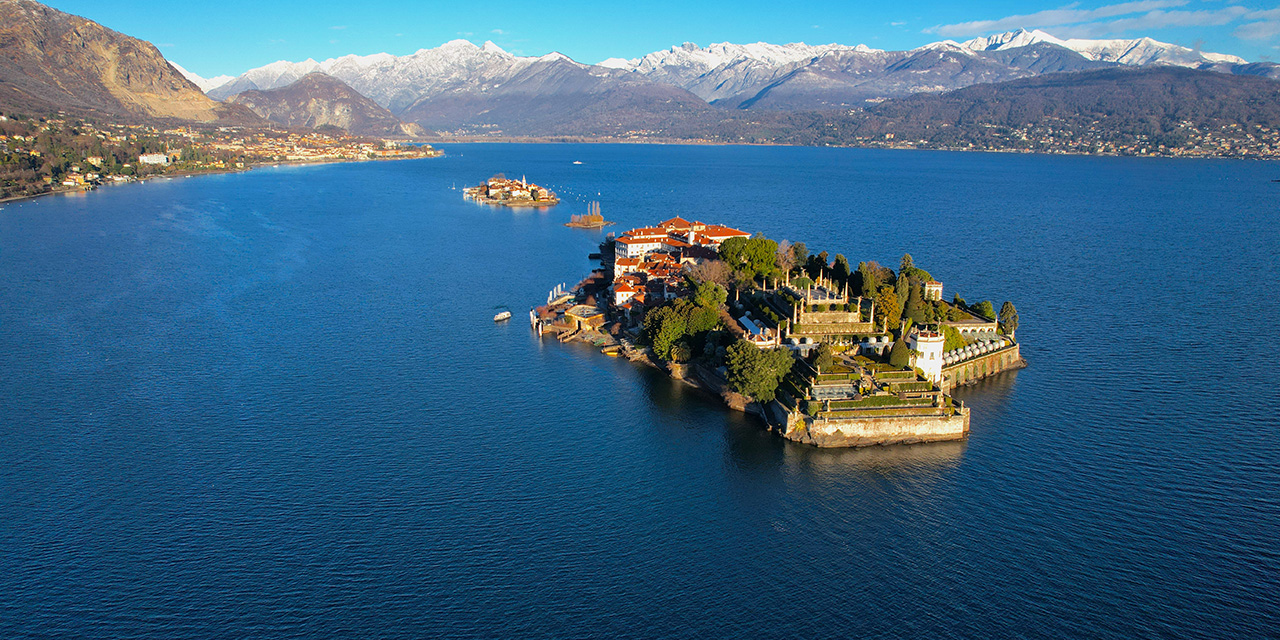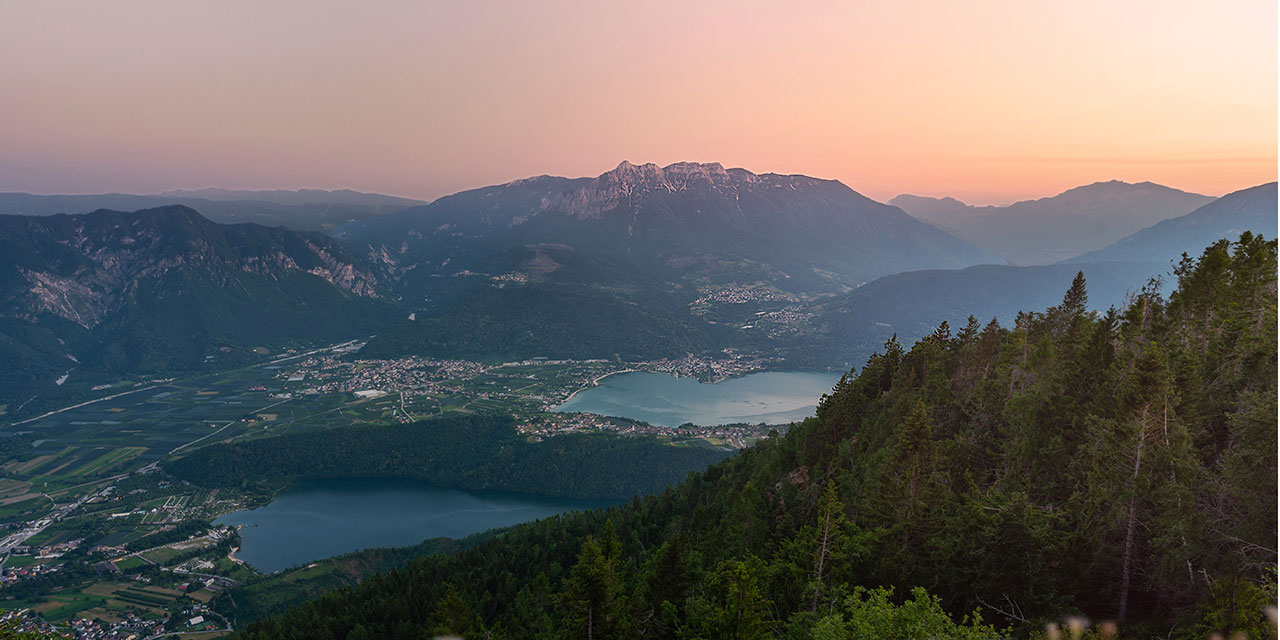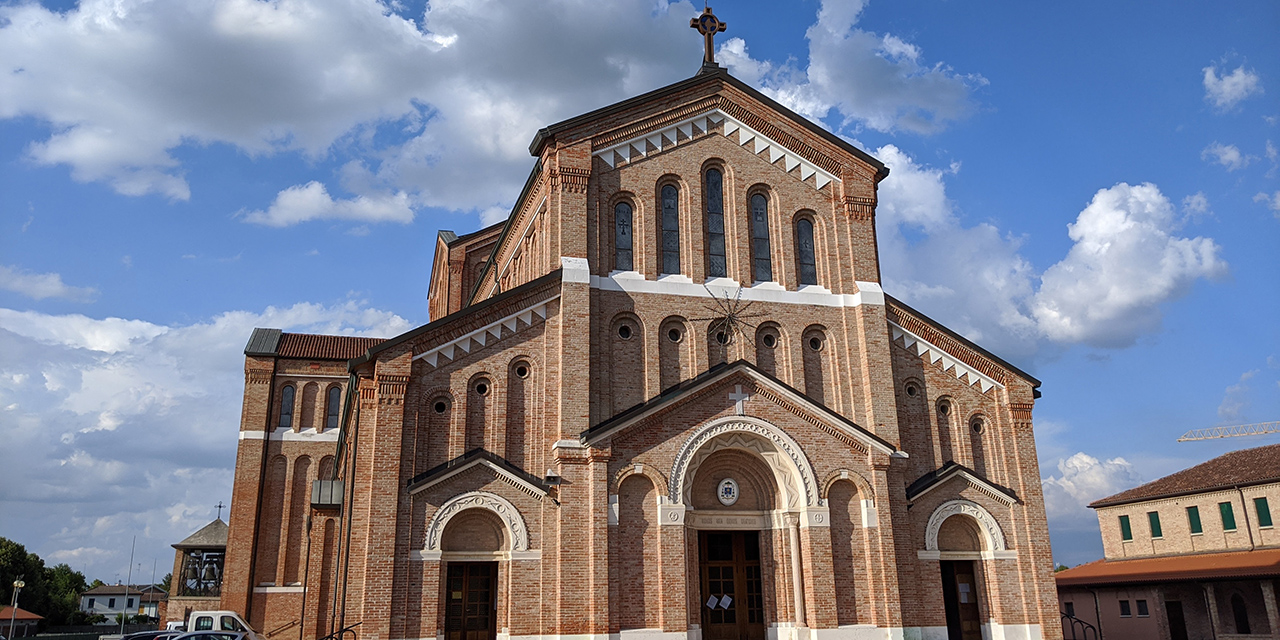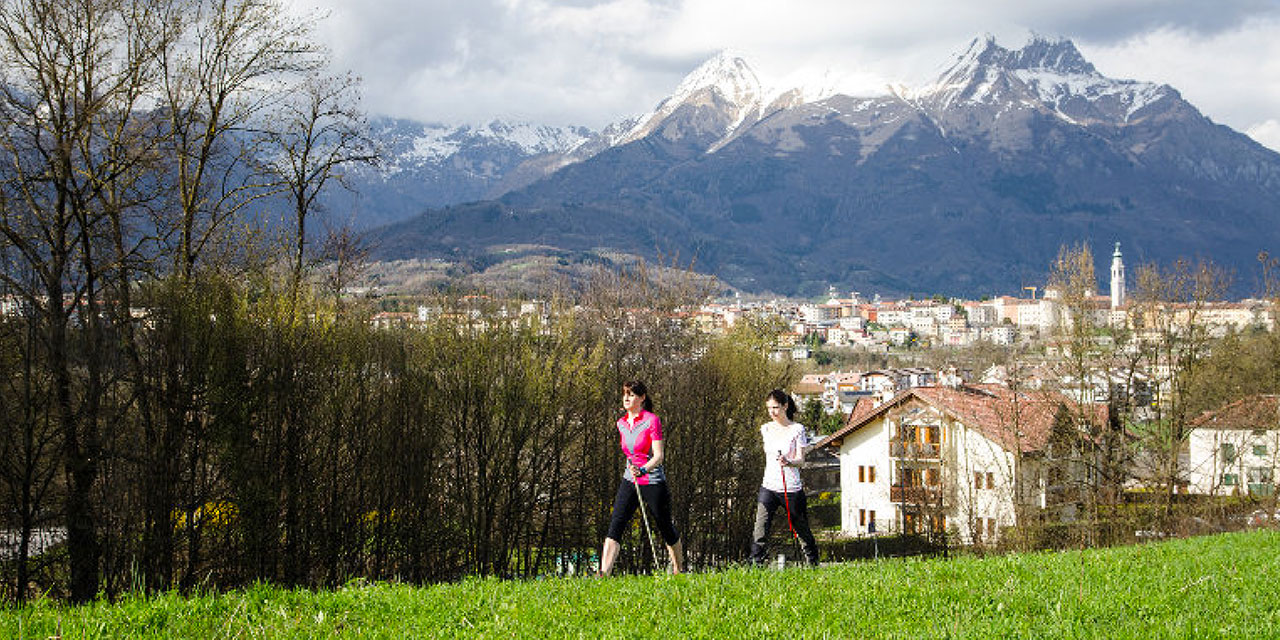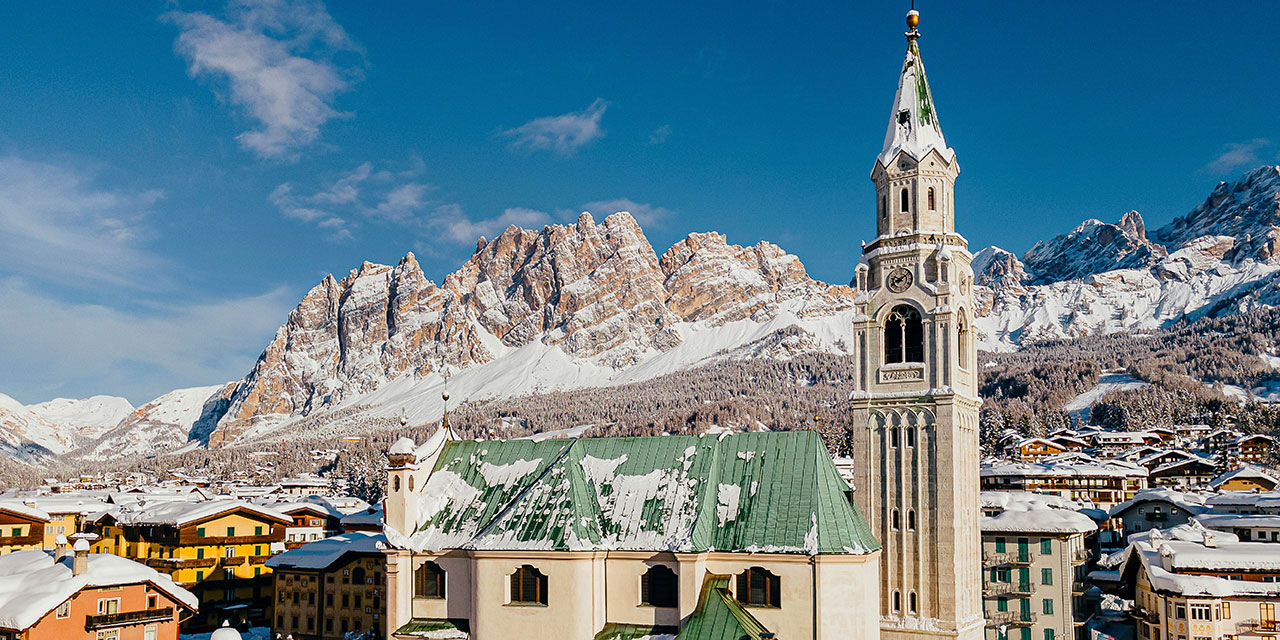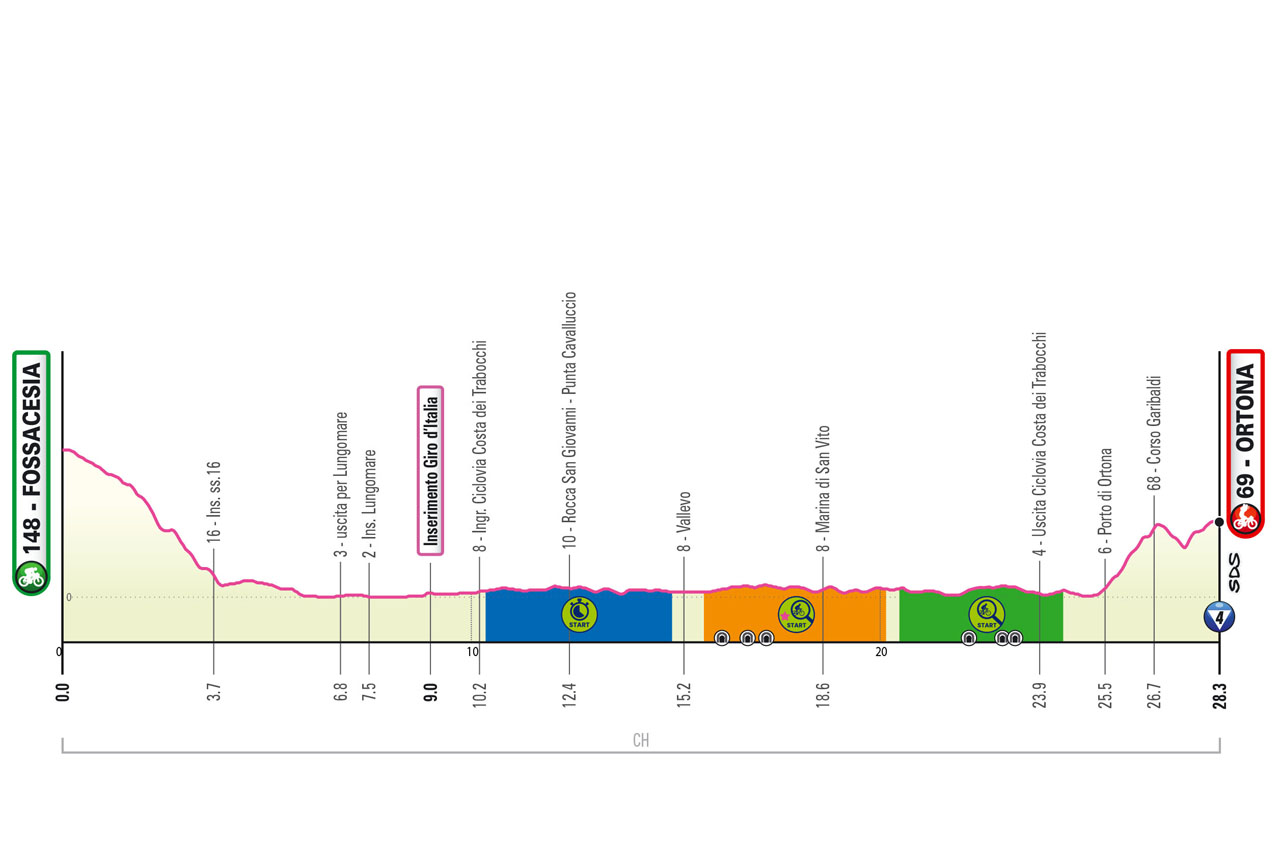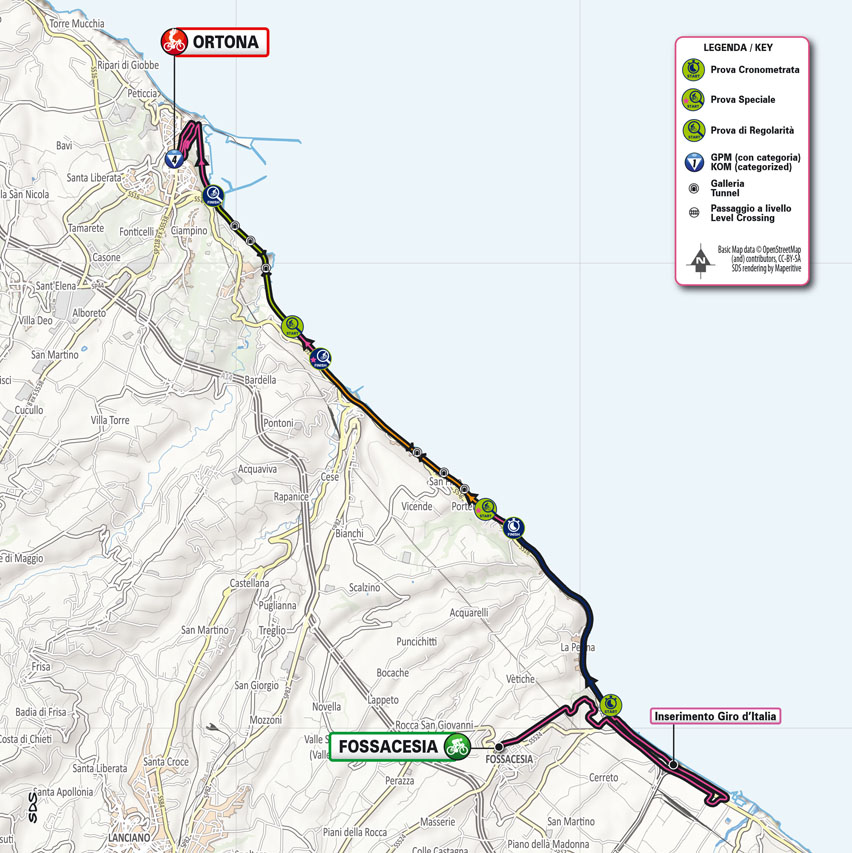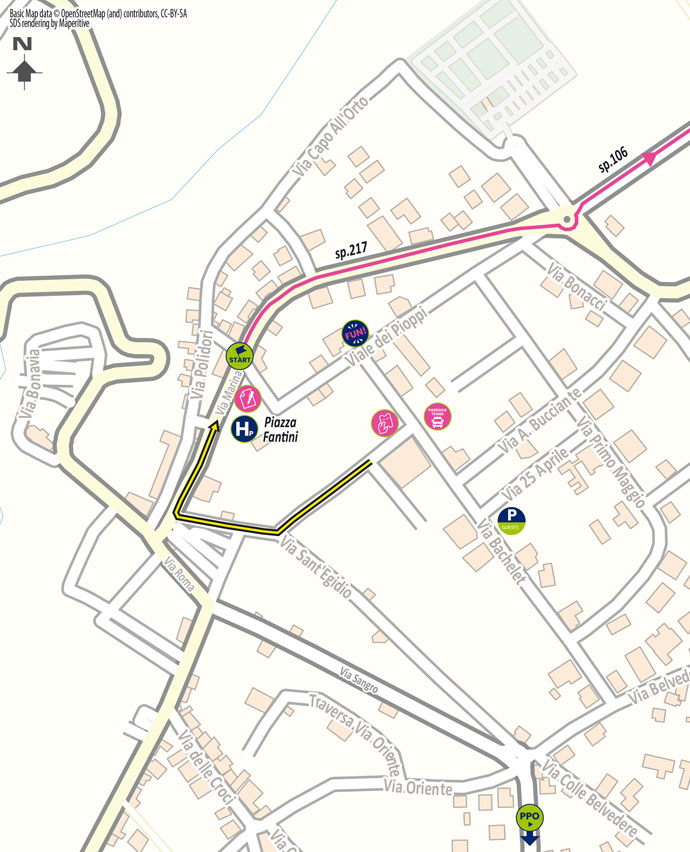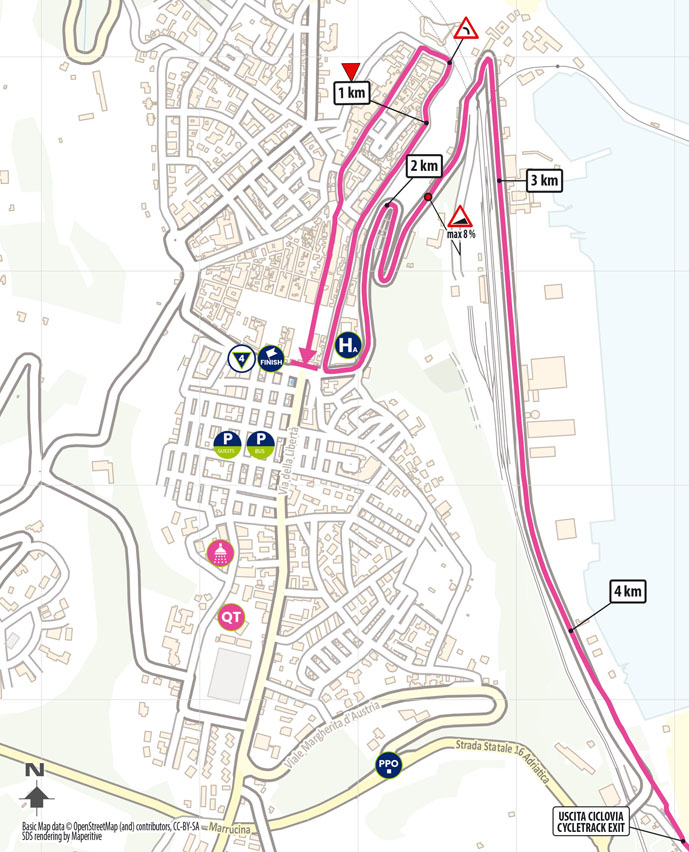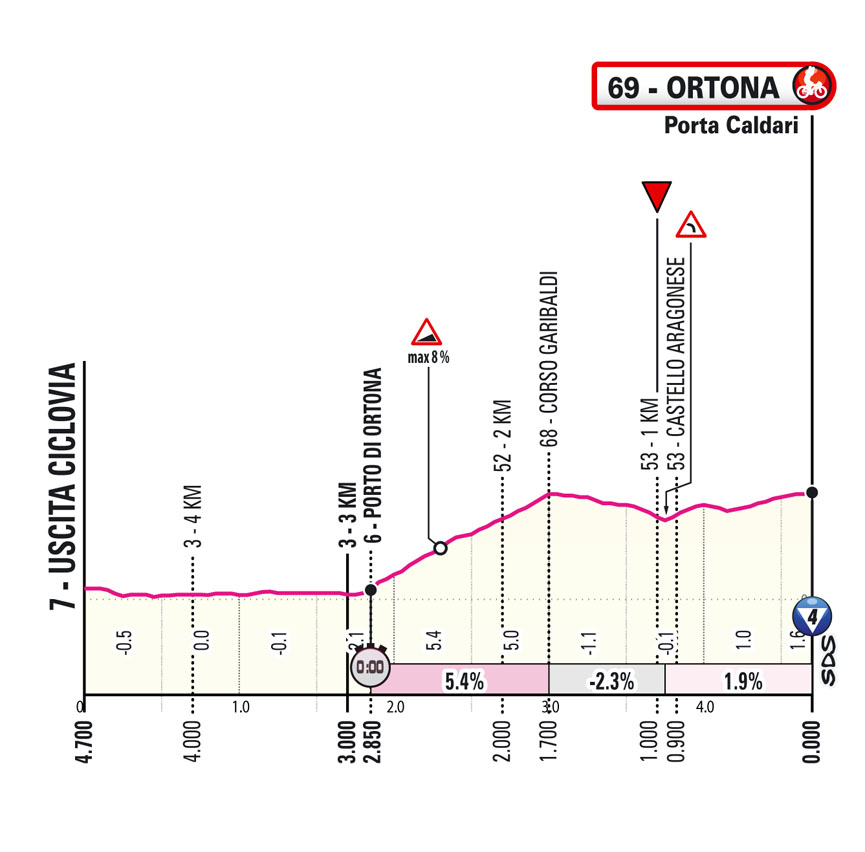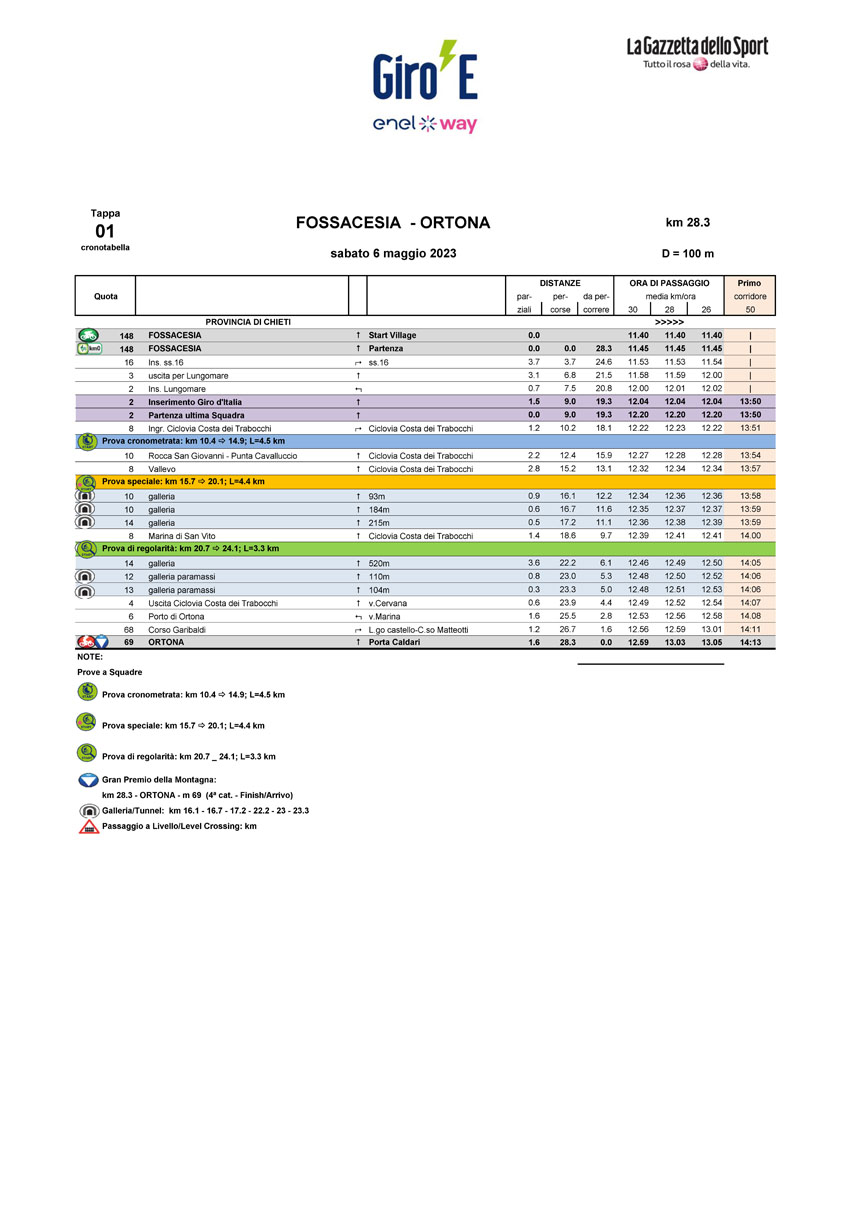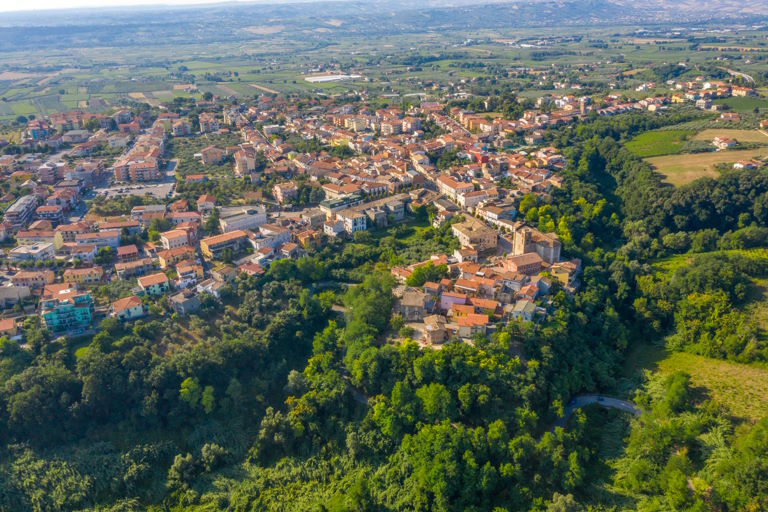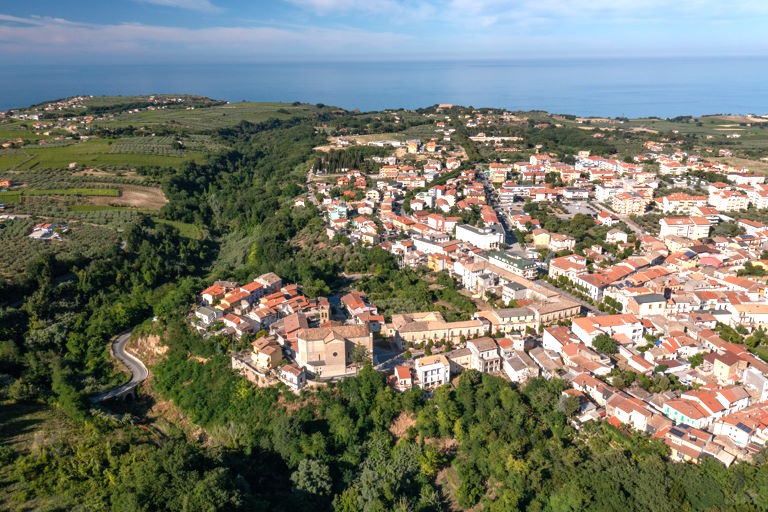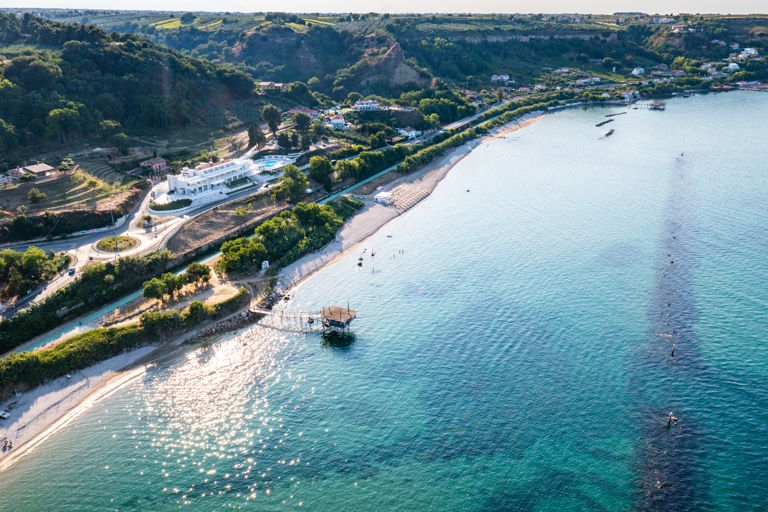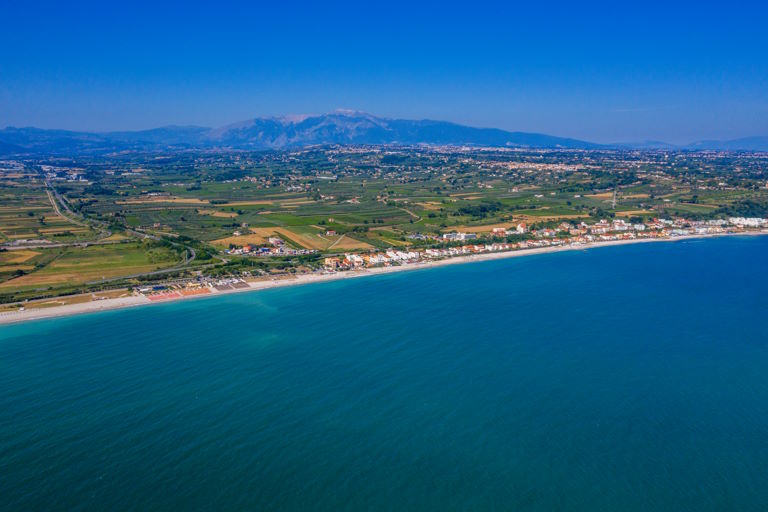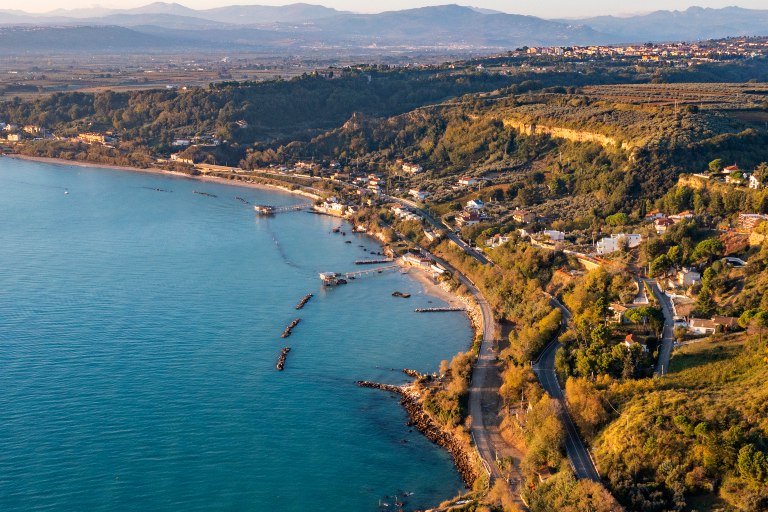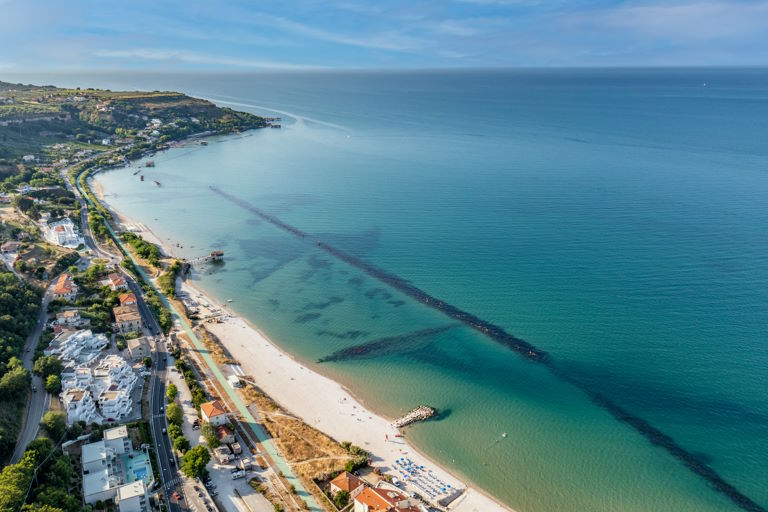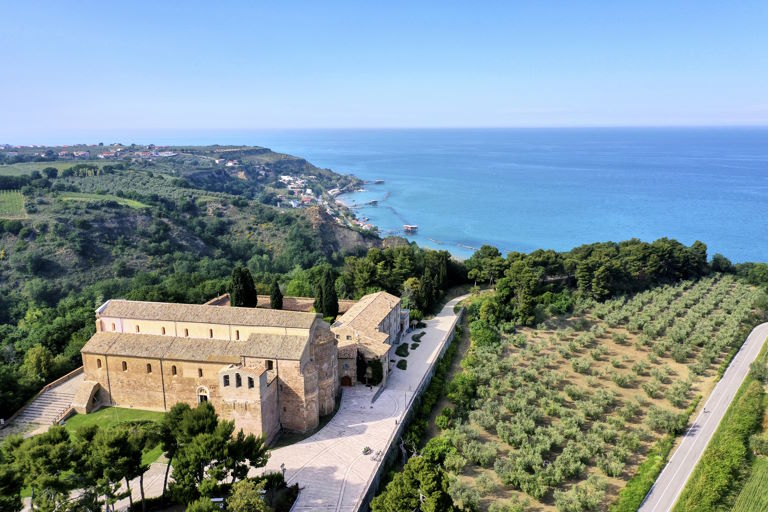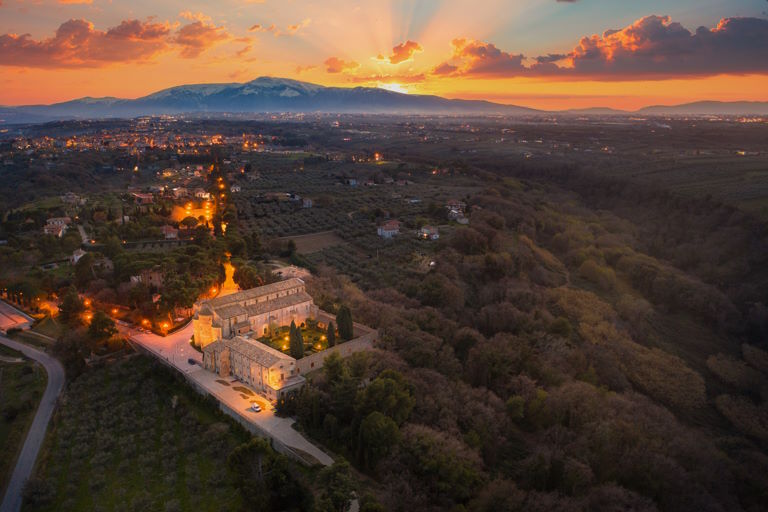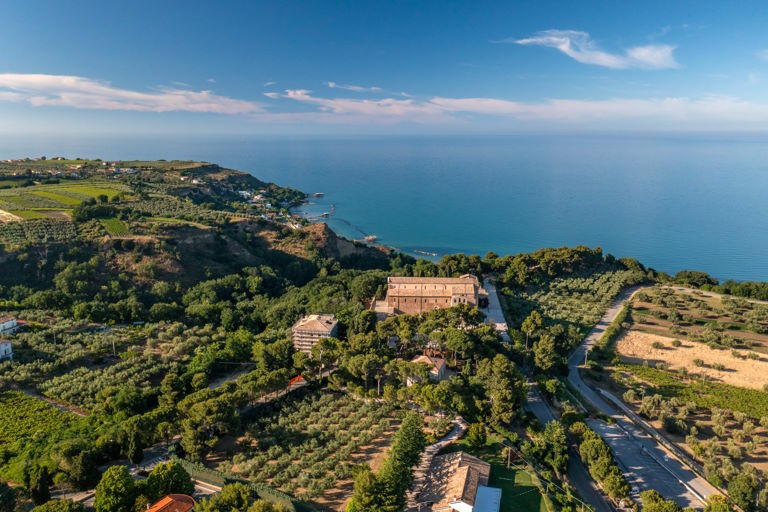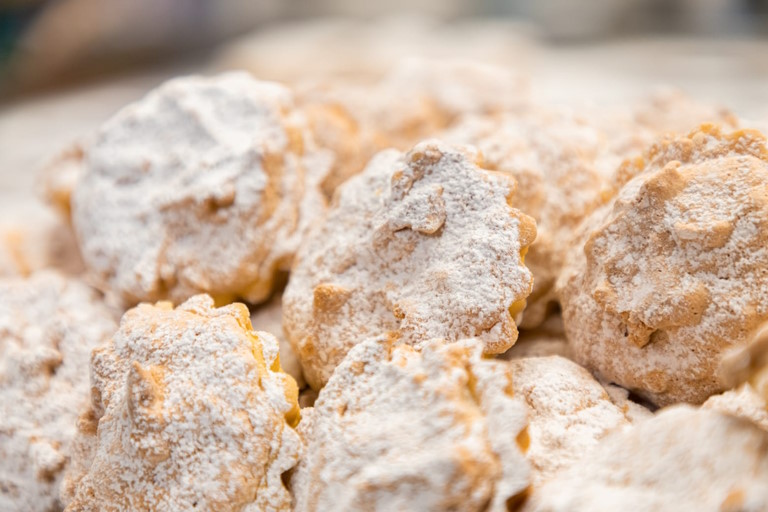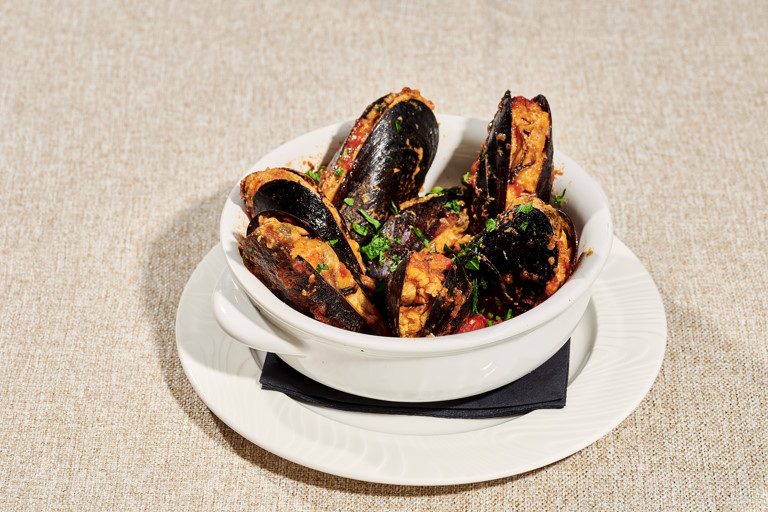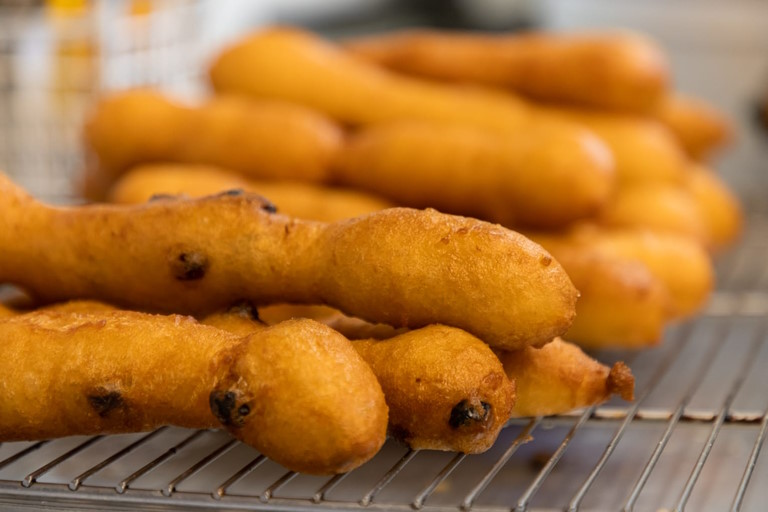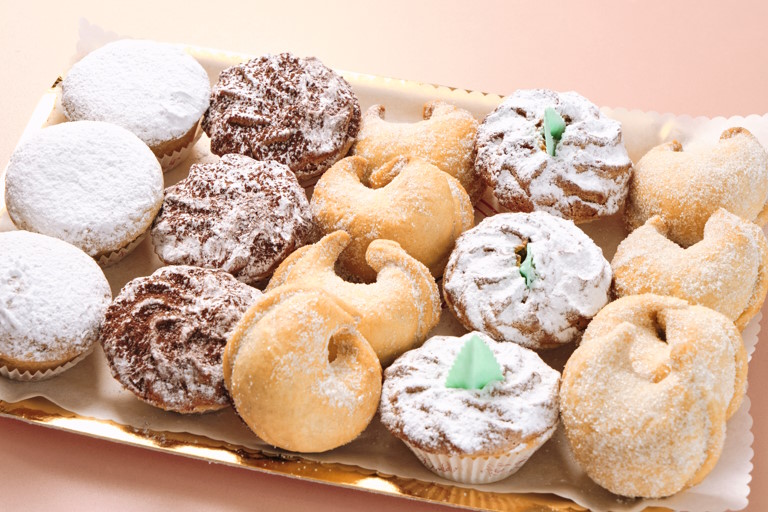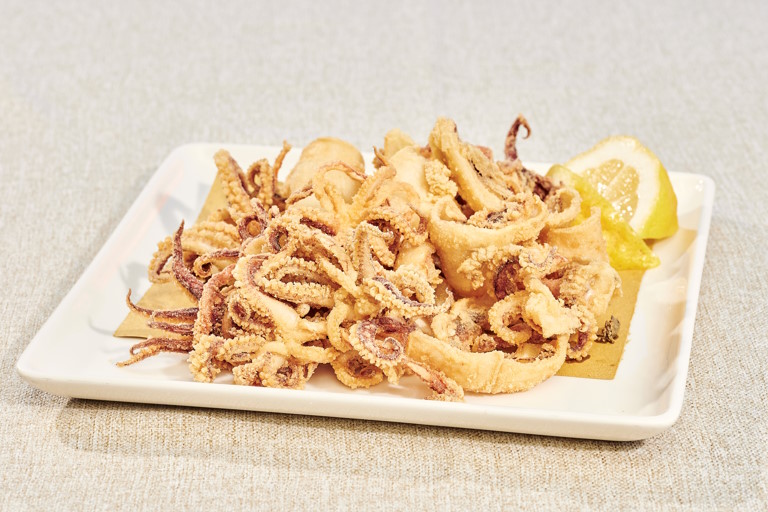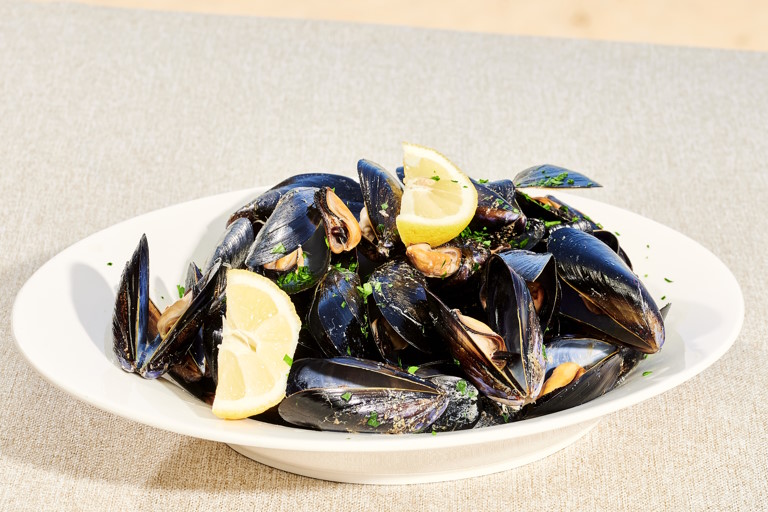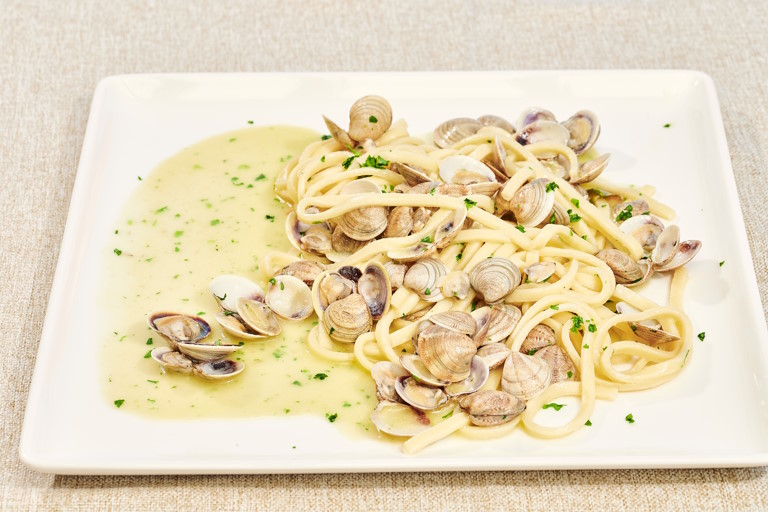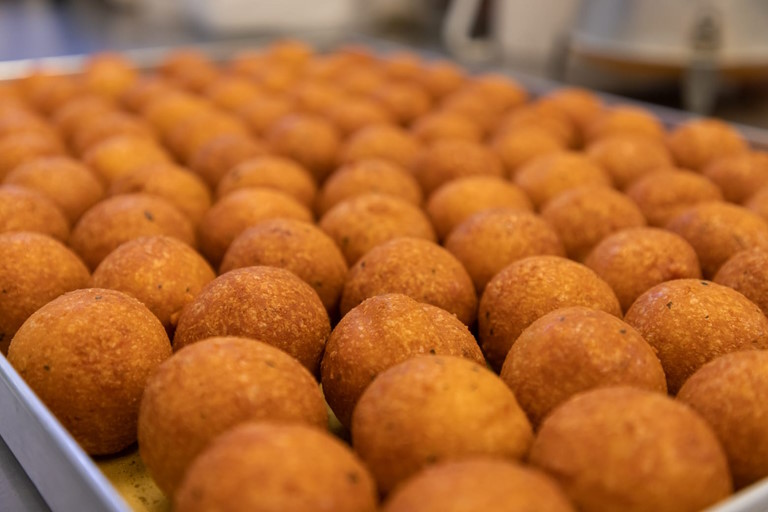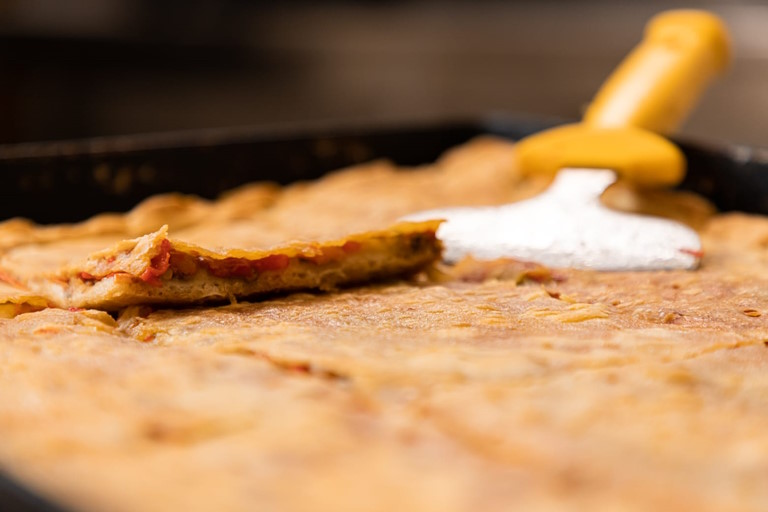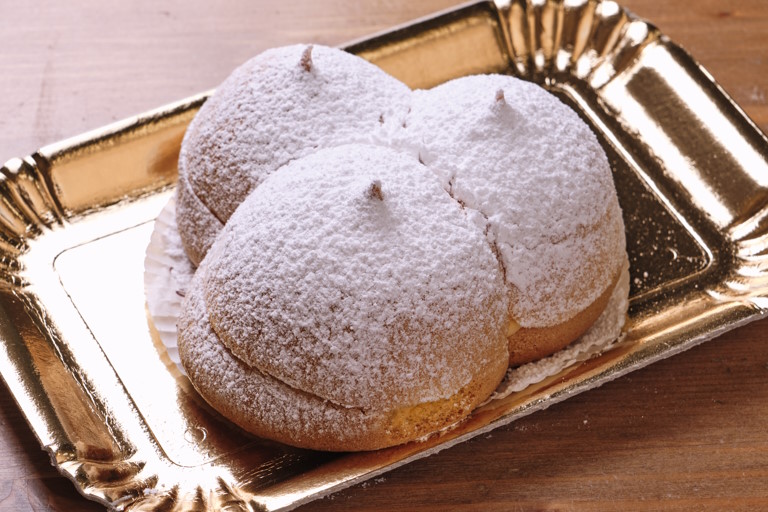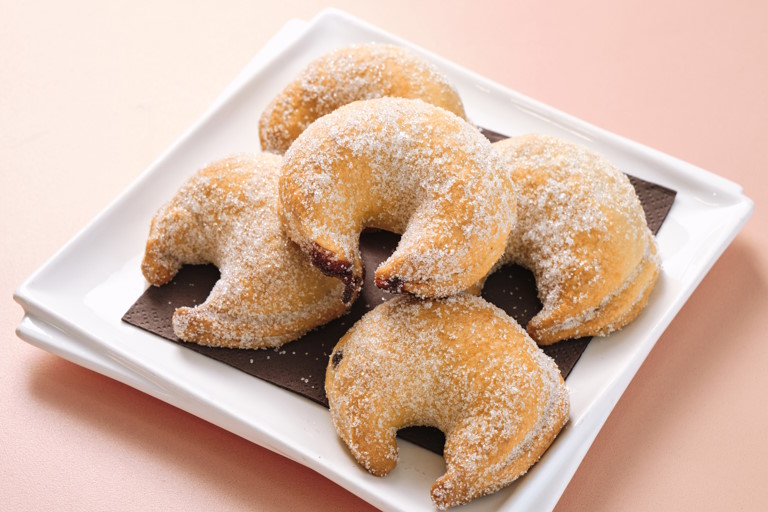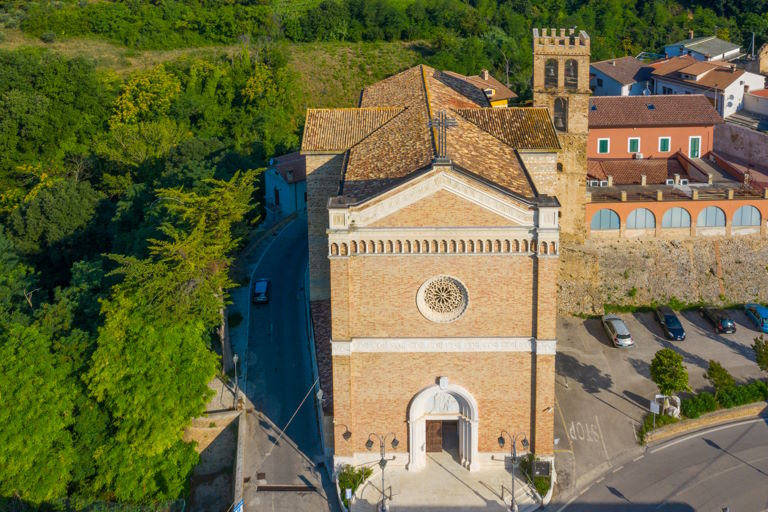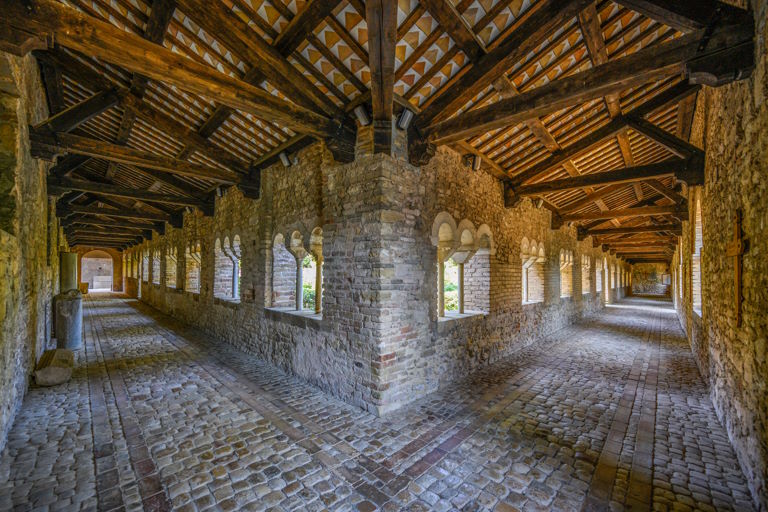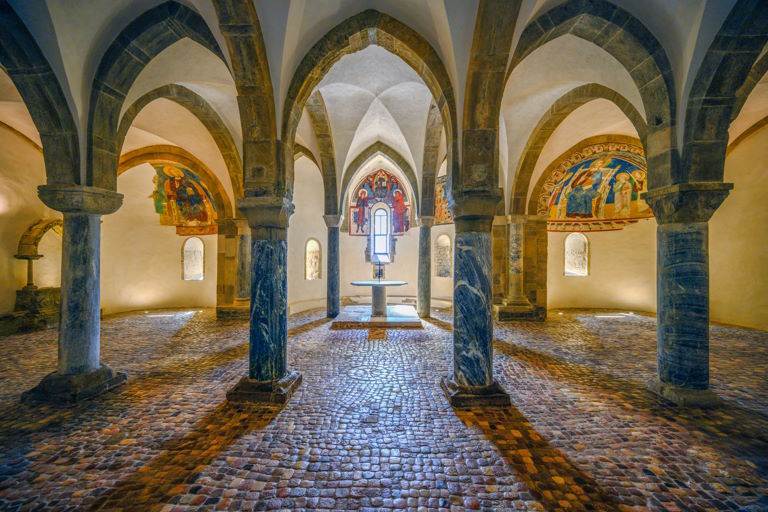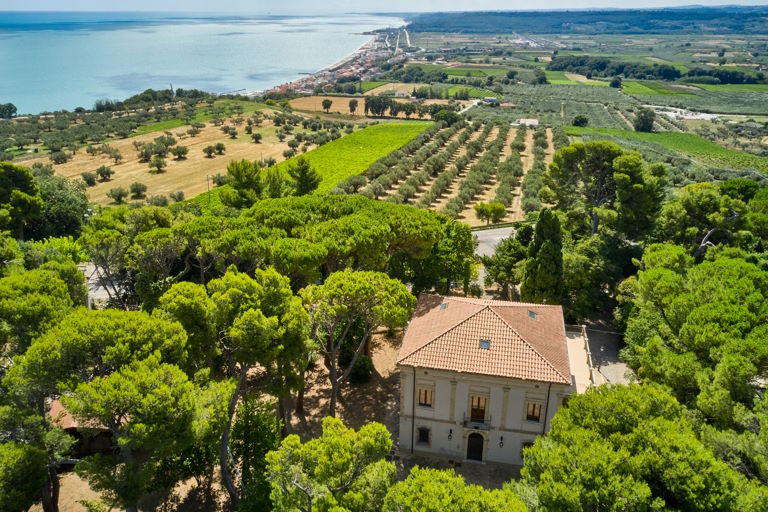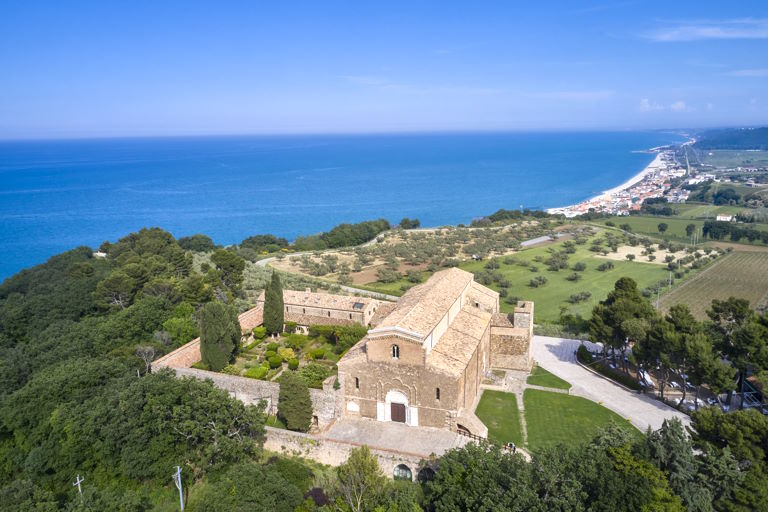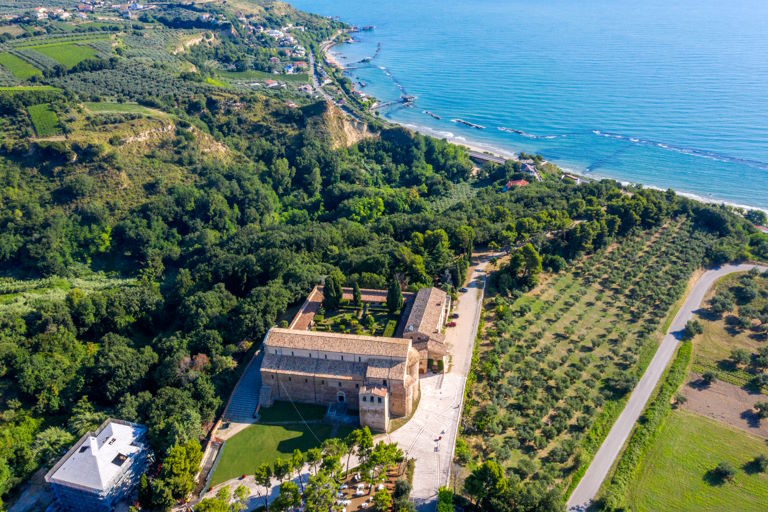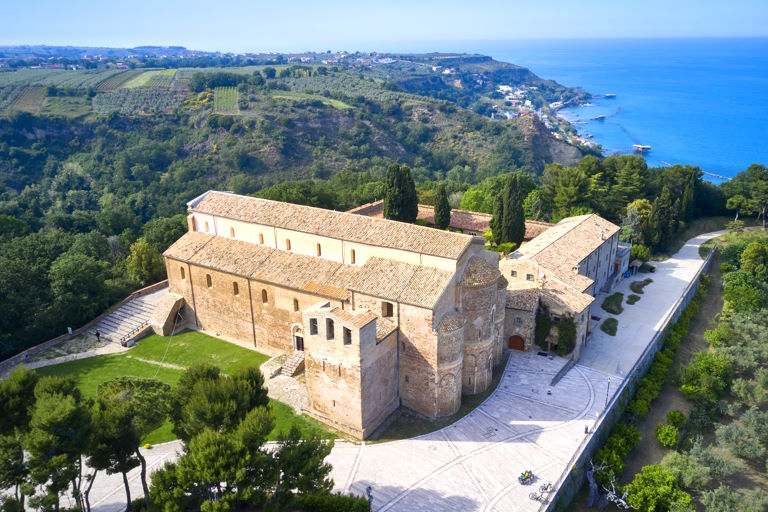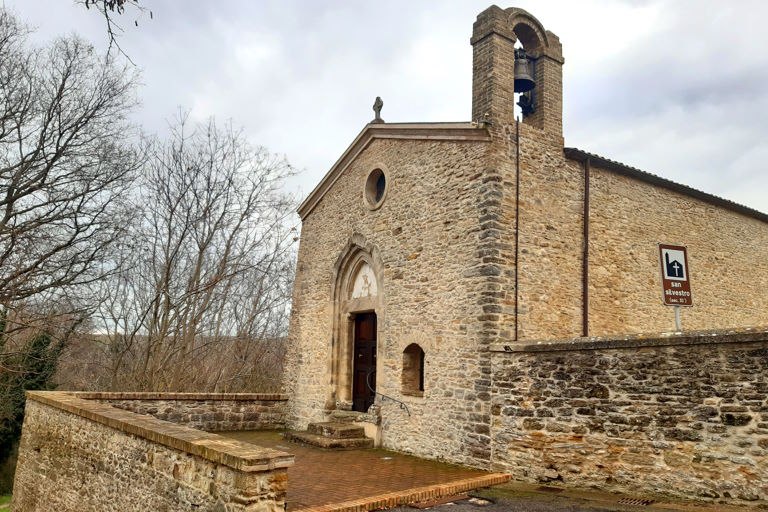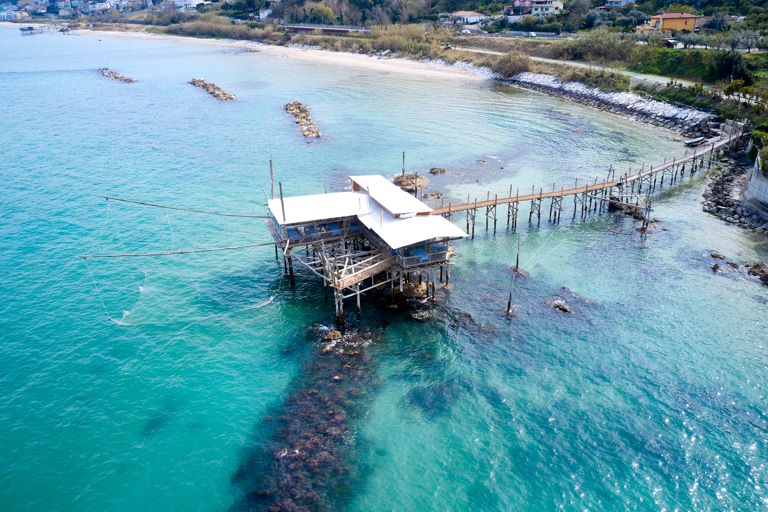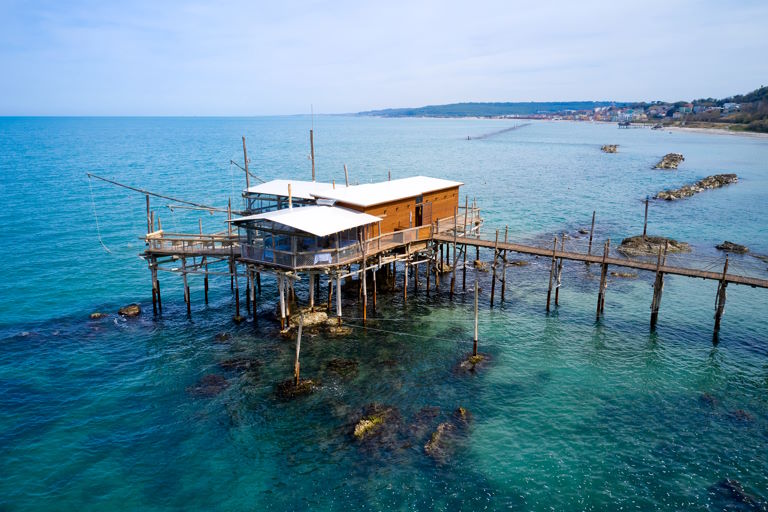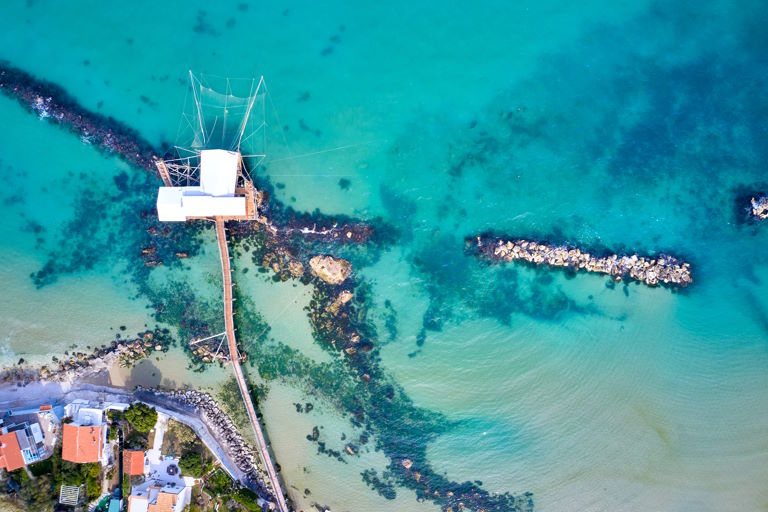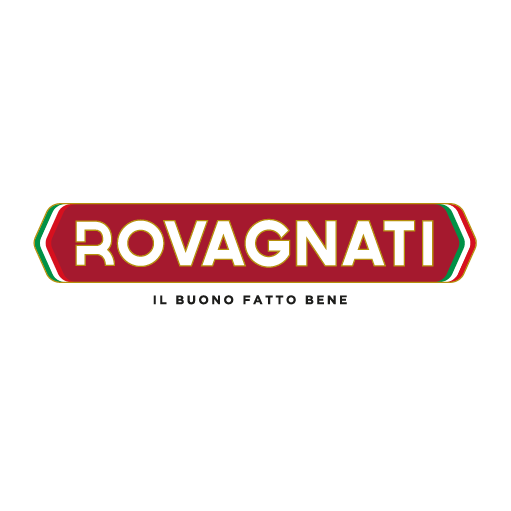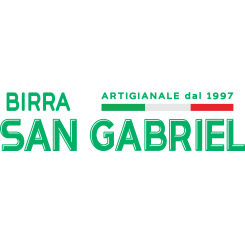profile
map
start / finish
final kilometres
itinerary timetable
tourist info
Host city:
FOSSACESIA
Overview
Inhabited in Roman times by the Frentan people, in the Middle Ages Fossa Ceca was a fief of the Benedictine monastery of San Giovanni in Venere following the alternating historical events.
Blue Flag for 21 years, City Silver Medal for Civil Merit, City of Oil and Wine, Fossacesia boasts a particularly marked tourist vocation.
The presence of the Green Way on the Trabocchi Coast that runs along the seafront of Fossacesia Marina has encouraged the development of a series of activities on eco-sustainable mobility, such as bike sharing, micro mobility activities, charging points for electric cars.
Food
Fossacesia is on the table with extra virgin olive oil, citrus, fish dishes, especially oily fish to be tasted on trabocchi, pizzas and foje, pallotte cace e ove, pizza with peppers and sardines, crispelle, sise di Venere, “celli pieno”, bocconotti.
Beverages
Among the wines of fine production there are Montepulciano d’Abruzzo DOC and other excellent wines from Pecorino, Passerina and Cococciola grapes.
Points of Interest
On the promontory of Venus stands the Abbey of San Giovanni in Venere, born on the ruins of the ancient Roman temple of Venus Conciliatrice, whose current layout is from the Benedictine era.
In addition to the Fossacesia Abbey, it hosts the church of San Silvestro of the eleventh century, the Palazzo Contini, of the eighteenth century and Palazzo Mayer of 1835, which now houses the Museum of War and Peasant Arts, the Palazzo dei Priorii, of the nineteenth century, the church of the Rosary of 1876, the old town hall, the Parish Church of San Donato, whose bell tower dates back to 1200 and the Fountain of the Five Spouts from the late 1800’s.
ORTONA
Overview
A CITY TO DISCOVER
A land washed by the sea and defended by the Appennine Mountains, Ortona is the gateway to this part of Abruzzo, inhabited since the Bronze Age (1400 BC) as a seafaring and later developed, by the shelter of its promontory overviewing the Adriatic Sea, into a commercial and tourist harbour.
The city now has 24 thousand people living in a hilly area of over 70 sq km – protected to the west by the nearby Mount Majella, 2,793 m in height – extending from south to north along a coastline of about 20 km.
The city was reborn after the tragic destruction of 80% of its buildings from World War II, preserving with affection the important traces of its urban planning and was awarded the Gold Medal of the Presidency of the Italian Republic for the acknowlegement of the civilian contribution of al the victims who sacrificed their lives in honour of their town.
THE COAST AND THE BEACHES OF ORTONA
The coast extends for about 20 km and consists of an initial northern section, location Foro and Lido Riccio, with a wide and sandy beach, free bathing areas and resorts. Of naturalistic interest for its flora and fauna is the beach of dunes that lies between the station of Tollo and the mouth of the Arielli River.
Beyond the sandy lido, there is a succession of coves and pristine gulfs, rich in Mediterranean flora, such as the Ripari di Giobbe, Punto Ferruccio, Punta Lunga and further south Acquabella.
A varied coast, part of the Teatine Coast that extends from Ortona to San Salvo, characterised by the presence of the Trabocchi, ancient fishing structures.
Behind the harbour and the area of pleasure-boating, there is the Lido Saraceni, a sandy bay with beach resorts and free areas below the green promontory of the hill of San Donato.
FESTIVALS AND TRADITIONS
Among the events not to be missed, on January 17 St. Anthony, popular representation of the Saint’s life in various locations around the city and on January 20 St. Sebastian in St. Thomas Square with the ritual of the ferry, a small papier-maché boat full of smoke rockets suspended with a wire that connects the two ends of the square. The voyage of the boat along the thread, once ignited, indicates the auspices for the fishing season and agriculture.
The Good Friday procession during the week of the Easter festivities with the heart-rending singing of the Miserere by the composer Francesco Masciangelo (1823-1906) and the prologue of the procession of symbols of the passion at the crack of dawn. During the first weekend of May, there is the celebration of the Perdono (Forgiveness), in honour of St. Thomas the Apostle, with the Saturday afternoon parade of the silver keys, the Sunday morning procession of the gift and in the evening the procession of the bust of the Patron Saint.
On December 28, a manifestation recalls the end of the Battle of Ortona with the assignment of its award to the distinguished personalities of the community of Ortona.
Food
Abruzzo is among the top 5 regions of Italy for the production of wines and in the countryside of the Province of Chieti, between the Adriatic and the mountain, lies 80% of the region’s vineyards: the diamond point of this territory being Ortona with its orographic structure and rolling hills, rich in rivers and streams, represents the best winemaking of Abruzzo in terms of quality and quantity.
The wines, Montepulciano d’Abruzzo, Trebbiano, Cerasuolo, Pecorino, Passerina and Cococciola, are the expression of this land rich in tradition and innovations.
Besides the various private cellars, there are two wine growers’ cooperatives and a consortium of cooperatives for bottling present on the territory, all internationally acknowledged.
Corvo Palace, in the historic centre of Ortona, hosts the Regional Wine Cellar of Abruzzo, where you can taste and buy a wide variety of local wines. Alongside the winemaking qualities, there is an equally unique and refined production of oil.
BETWEEN SEA AND LAND
The cuisine of Ortona is the happy marriage between the products of the sea and those of the earth. Among the typical dishes you can find the brodetto, fish soup with tomatoes, peppers and EV olive oil, served in terracotta pots; baccalà e patate in umido, salted codfish and potato stew; broccoli e stoccafisso, broccoli and stockfish; baccalà e peperoni, salted codfish and peperoni; seppie e piselli, squid and peas; finally, spaghetti con pelosi o frutti di mare, spaghetti with crab or seafood, and frittura di pesce dell’Adriatico, fried fish of the Adriatic. Tied to the rural tradition is pasta alla chitarra, handmade pasta with mixed meat ragù, cardone in brodo di tacchino, cardoon in turkey soup, pallotte cace e ove, cheese dumplings (made of eggs, grated cheese and breadcrumbs), pizze e fuoije (sautéed mixed greens accompanied by cornbread).
Among the traditional desserts are the nevole, cone-shaped rolled wafers made with mosto cotto, oil and flour, flavoured with cinnamon and baked between two heated iron plates like the pizzelle, a re-elaborated version of the pizzelle of Abruzzo.
Points of interest
The city tour starts from Terravecchia promontory, the hamlet of sailors, overlooking the Adriatic with its quaint narrow streets, the alleyways, the remains of ancient walls built to defend the city and the Aragonese Castle, an imposing defensive building wanted by King Alfonso of Aragon around 1452, after the Venetians had destroyed the port. Built on the ruins of an ancient fortress, with five lateral towers, it was damaged in World War II and in 1946 a landslide caused the collapse of the northern wing.
The ancient Corso Matteotti overlooks Corvo Palace (XVI-XVII centuries). The premises on the ground floor have housed the Enoteca Regionale d’Abruzzo (Regional Winery of Abruzzo); the first floor is the headquarters of the National Tosti Institute with the Musical Museum of Abruzzo. In the museum, through original photographs, letters, score notes, books and furniture that belonged to Francesco Paolo Tosti, you can trace the life of the musician and composer: born in Ortona in 1846 and died in Rome in 1916, he had a prolific output of romanze and chamber music published by Ricordi and lived for over thirty years in London as a singing teacher for the British Royal Family.
Strolling along Corso Matteotti, you can encounter the Cathedral of St. Thomas the Apostle and the homonymous square. From September 6, 1258, it has enshrined the remains of the Apostle Thomas stolen in Chios, Aegean island, by Leon of Ortona during a naval expedition and by the end of the XIV century the temple was referred to as being dedicated to the Patron Saint of the city. The Patron Saint’s Day falls on the first weekend of May, and from Saturday to Monday, visiting the tomb, you can obtain the plenary indulgence of St. Thomas’ forgiveness.
Three chapels of the Cathedral have been destined to the Diocesan Museum, which houses important works of painting, sculpture and jewelery dating from the fifteenth century to the nineteenth century. The church is also the finish line of the Way of the Apostle Thomas, a religious-cultural itinerary of over 450 km that reproposes the value of pilgrimage of the most important spiritual locations of Abruzzo.
After walking through the alleys of the old quarter, you go down the long promenade overviewing the sea, the Orientale, and you reach Farnese Palace, built by the Duchess Margaret of Austria, daughter of Charles V and wife of Ottavio Farnese, when, after the purchase of the city in February 1582, she decided to establish her residence in Ortona. Lady Margaret chose the most picturesque place of the city and the building project was entrusted to the Roman architect Giacomo Della Porta. The Palace is home to the “Basilio and Michele Cascella” Gallery, which exhibits the works of three generations of the famous family of artists.
Continuing along the Orientale, you enter the Terranova hamlet, where you find the “F.P.Tosti” theatre, the cultural heart of the city. It was designed in 1927 and funded by the engineer Tommaso Pincione of Ortona. It was inaugurated in 1930 and for several decades was privately owned.
The square of the Theatre divides it from the Oratorium of the Miraculous Crucifix and of the Sant’Anna complex which houses, on the ground floor, the Public Library, and on the first floor, the MUBA (Museum of the Battle), which exhibits artifacts and documents on the dramatic battles that in December 1943 almost completely destroyed the city with more than 1,300 civilian victims, so as to be called by Winston Churchill, the “little Stalingrad”.
The Terranova hamlet closes the perimeter of the ancient walls at Porta Caldari; Via Constantinople leads upwards to the church of St. Mary of Constantinople, dating from the seventeenth century, while the original building is of the XIII century.
In the Terranova hamlet of St. Francis Square, there is the church of Santa Maria delle Grazie, also rebuilt after the war; guarding the remains of the Blessed Lorenzo of Villamagna, who died in the convent of Ortona in 1535.
On the hill of the San Donato hamlet, four kilometers south from the city centre, on the edge of the Adriatic Speedway 16, stands the Moro River Canadian War Cemetery. There lie the mortal remains of 1,615 soldiers fallen in World War II, belonging to Canadian regiments, who paid the highest toll in the Battle of Ortona.


